Resiliency in the U.S. Healthcare Supply Chain
Leading health systems are making resiliency a day-to-day priority, blending local sourcing, data-driven insights, and collaboration to weather uncertainty.


Leading health systems are making resiliency a day-to-day priority, blending local sourcing, data-driven insights, and collaboration to weather uncertainty.

HealthTrust Performance Group solves the toughest challenges by leveraging our decades of senior level healthcare experience to optimize clinical and operational performance while providing unmatched savings. Its a difference only HealthTrust can make.
The Journal of Healthcare Contracting is published bi-monthly by Share Moving Media
350 Town Center Ave, Ste 201 Suwanee, GA 30024 -6914
Phone: 770/263-5262
FAX: 770/236-8023
e-mail: info@jhconline.com www.jhconline.com
Editorial Staff
Editor Graham Garrison ggarrison@sharemovingmedia.com
Senior Writer and Columnist
R. Dana Barlow rickdanabarlow@wingfootmedia.biz
Editor-in-Chief, Dail-eNews
Jenna Hughes jhughes@sharemovingmedia.com
Content Creator Pete Mercer pmercer@sharemovingmedia.com
Art Director Brent Cashman bcashman@sharemovingmedia.com
Publisher John Pritchard jpritchard@sharemovingmedia.com
Circulation Laura Gantert lgantert@sharemovingmedia.com
The Journal of Healthcare Contracting (ISSN 1548-4165) is published monthly by Share Moving Media, 350 Town Center Ave, Ste 201, Suwanee, GA 30024-6914. Copyright 2025 by Share Moving Media. All rights reserved. If you would like to subscribe or notify us of address changes, please contact us at the above numbers or address.
POSTMASTER: Send address changes to Share Moving Media, 350 Town Center Ave, Ste 201, Suwanee, GA 30024-6914. Please note: The acceptance of advertising or products mentioned by contributing authors does not constitute endorsement by the publisher. Publisher cannot accept responsibility for the correctness of an opinion expressed by contributing authors.
2 Publisher’s Letter: Resiliency in Action
4 Growth of Supply Chain as a Strategic Asset for the Enterprise – How it Powered a Historic Pediatric Hospital Launch Inside the Supply Chain transformation at Children’s Healthcare of Atlanta.
11 AI’s Rx for Healthcare Finance Unlocking value through intelligent contracting.
28 Stockpiles, Substitutes, and Strategy
Navigating pros, cons of weaving through enduring supply chain crises, disruptions.
38 Navigating Through the Raging Rapids of Reshoring How might onshoring, nearshoring, offshoring or even 3-D printing impact supply channels?
pg16
48 Can 3-D Printing Bolster Healthcare Supply Chains?
50 Might Reshoring Compensate for Lack of Foresight Decades Ago?
51 Putting the Medical Supply Chain to the Test
56 Supply Chain By the Numbers
59 Opening Doors, Building Community Rush University Health System’s inaugural Supplier Diversity Summit sparks new pathways for local vendors.
62 Healthcare Supply Chain Must Deliver by Engaging, Executing The checks are in the mail.
64 Contracting News

In healthcare, few words have gained more relevance in recent years than resiliency. Once a peripheral consideration in supply chain management, it’s now a non-negotiable pillar of strategic planning for hospitals and health systems across the country.
And for good reason. The last five years have laid bare the vulnerability of global supply networks, from pandemics and natural disasters to tariff disruptions and geopolitical unrest.
In this issue, we take a deep dive into how leading health systems are operationalizing resiliency – not as an emergency response, but as an everyday practice.
Our cover story, “Resiliency in the U.S. Healthcare Supply Chain,” outlines how forward-thinking organizations are weaving together data insights, local sourcing, and cross-functional collaboration to build flexible, proactive supply networks.
You’ll see this in action at HonorHealth, where Ryan Kirane and his team have created a new leadership role focused solely on risk and resiliency. HonorHealth’s strategy now blends efficient inventory management with scenario planning, enabling the organization to anticipate shortages and pivot quickly when disruptions occur.
SSM Health has taken a similar approach, embedding resiliency into their sourcing and contracting
decisions. As Brad Forth and Mike McDonough share, SSM isn’t just collecting resiliency data –they’re using it to drive real-time decisions, develop auto-substitution plans, and improve visibility across their supplier base. Their strategy acknowledges the balancing act between local and global sourcing, while remaining agile in the face of evolving tariff and geopolitical risks.
Finally, Roper St. Francis Healthcare exemplifies the importance of strong relationships — both with suppliers and regional peers. Doug Robertson’s team has diversified beyond single suppliers, leveraged predictive analytics, and maintained a collaborative network of supply chain leaders across the Southeast. Their proactive engagement with Vizient and integration of clinical expertise into supply planning shows how human insight remains a key part of any resilient system.
Taken together, these stories highlight a clear shift: resiliency is no longer a “nice to have.” It’s a daily discipline – built on data, teamwork, transparency, and community.
I hope these insights inspire you to evaluate your own resiliency strategies and explore new ways to strengthen the foundations of your supply chain.




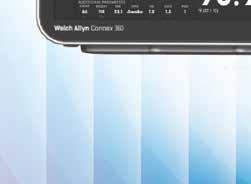



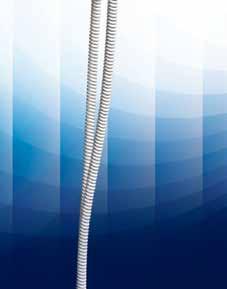


Inside the Supply Chain transformation at Children’s Healthcare of Atlanta.
Children’s Healthcare of Atlanta is a free-standing integrated pediatric health system with three acute care hospitals and a network of alternative care locations managing more than 1.2 million patient visits annually.
To enhance the quality of care, patient experience, and access to specialized pediatric services for children across Georgia and beyond, Children’s recognized the need to build a new hospital on its North Druid Hills campus – just north of downtown Atlanta – and transition from the existing Egleston Children’s Hospital. The Arthur M. Blank Hospital stands 19 stories tall with more than 2 million square feet of hospital space. It features:

446 licensed beds
The state’s only Level 1 pediatric trauma center
70,000 square-foot Emergency Department – nearly three times the ED space at Egleston. The ED has 69 emergency exam rooms, including six trauma rooms.
55,000 square-foot Radiology Department – more than double the square footage at Egleston.
98 patient beds dedicated to children with cancer and blood disorders – 20% of all patient rooms.
84 pediatric cardiac beds – 25% more than Egleston.
22 operating rooms, including three specially designed cardiovascular operating rooms.
Arthur M. Blank Hospital is the largest healthcare project in the history of Georgia. Children’s made history on September 29, 2024, when it moved 202 patients from Egleston Hospital to the new Arthur M. Blank Hospital in fewer than 10 hours, culminating one of the largest single-day pediatric hospital moves in the country.
The planning for that momentous achievement started several years earlier. Back in May 2022, Supply Chain under the new leadership of Aravind Sampath,
Vice President, Supply Chain was challenged with effectively managing system operations, building the talent needed for transformation efforts across all verticals (Sourcing, Contracting, Value Analysis, Procure 2 Payment, Logistics, Warehousing and Point of Care Inventory Management) and planning/execution of all workstreams for activation of the new hospital campus. It was critical to elevate the role of Supply Chain from a tactical function to strategic asset for the enterprise, and engage with key strategic business partners in order to execute all the complex workstreams for the new hospital which includes:
Design, build, stock and activate more than 40,000 SKU (Stock Keeping Unit) locations comprising more than 200 supply rooms, 23 operating rooms, cath labs, interventional radiology labs and other ancillary locations. Through the use of RFID and other technologies, the team’s goal was to enhance visibility of the demand signals, automate replenishment process and optimize inventory levels for greater than 99% supply availability.
Design workflows and deploy the biggest fleet of 90 Aethon Autonomous Mobile Robots (AMR) in a hospital setting to automate and efficiently move supplies, pharmaceuticals, linen, lab specimens, equipment, patient food trays and other use cases. This includes both automated horizontal and vertical movement with dedicated elevators.
Source and procure medical/nonmedical minor equipment and supplies needed to activate the hospital. Effectively maneuver through postpandemic supply chain challenges including backorders/product shortages, allocations and long lead times for medical equipment.

Negotiate and execute contracts for more than 100 categories of clinical and non-clinical purchased services. This includes services with various levels of complexity.
Set-up temporary warehousing and logistics capability to stage equipment, build inventory management solutions and stage supplies needed for activating the new hospital.
Deploy a Logical/Low Unit of Measure (LUM) distribution framework for effective fulfillment on estimated 1.1 million orders on an annual basis.
Design and implement an automated inventory management solution using RFID technology and streamlined integrations with Epic and Workday. This includes a two-bin solution in the supply rooms and perpetual/par inventory locations in the procedural areas.
Execute the logistics involved in relocation from the existing hospital and activation of the new facility on the same day.
Plan and execute the post go-live stabilization and optimization plan focused on market leading supply chain performance on 99.5+% supply availability.
supply chain from the ground up
Unlike a renovation or expansion project, the new hospital required strategic sourcing and equipment planning to successfully deploy nearly all-new medical and nonmedical equipment. From MRI machines and CT scanners to IV pumps, supply carts, and modular systems, thousands of items had to be contracted, procured, staged, delivered and installed, often amid post-pandemic supply chain constraints.
“This wasn’t a one-year effort. It was a multi-year sourcing strategy,” Sampath said. “Our GPO partner, Vizient’s Capital Sourcing solution was an extension of our team and integral in executing our plans.”
Adding to the difficulty was limited physical access to the site. Because it was an active construction zone, Sampath’s team had less than 120 days of on-site access to design, implement and deploy the supply storage systems. That meant relying heavily on blueprints and remote warehouse set-up through partnership with the med-surg distributor (Cardinal Health) to plan for 40,000 SKU locations, spanning clean supply rooms, medication storage, respiratory supply areas, 22 operating rooms, cath labs, interventional radiology, and imaging suites.
“Designing a new point-of-use system and storage based on blueprints, without being able to walk the space, was one of
the most complex aspects of the project,” Sampath explained.
One of the most groundbreaking aspects of the project was deploying what Sampath described as “the largest fleet of robots in a hospital setting.” The AMRs were designed and implemented to transport supplies, pharmaceuticals, linen, lab specimens, equipment, patient food trays and other items throughout the massive facility, navigating both horizontal corridors and elevators for vertical movement.
“The robots became an extension of our support operations team,” Sampath said. “We had to design workflows, define use cases, and integrate them into operations/human interactions. In some cases, the robots even accessed patient care areas to deliver pharmaceuticals and food.
“When a shipment arrives at the hospital, it’s already mapped to its final storage cabinet. Our robots then deliver

it directly to depots in each unit,” Sampath continued. “That efficiency from reduced touchpoints ensures the team can effectively operate the 14-bay dock and deliver close to 2,500 order lines on a daily basis.”
Beyond equipment and supply systems, Sampath’s team also had to renegotiate and launch contracts for all clinical and non-clinical purchased service services, including food and nutrition services, virtual and on-site interpretation, laundry and linen, waste management, landscaping, equipment service contracts, shredding, and several other services. The larger footprint and new infrastructure meant the majority of existing agreements no longer fit the scope.
“Every contract had to be reexamined and often rewritten,” Sampath said. “It wasn’t just the physical supply chain. It was every support service needed to operate a hospital of this scale.”
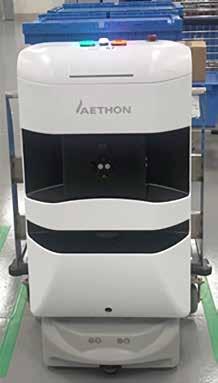
On top of that, the team implemented new supply chain technologies, including Workday as the ERP backbone, Tecsys RFID enabled point-of-use inventory management, and integrated with Epic clinical workflows in the procedural areas. Ensuring those systems worked seamlessly at go-live required exhaustive testing under tight deadlines.
For Sampath, the work demanded both technical expertise and a mindset comfortable with uncertainty.
“You have to be comfortable with quickly solving complex problems and finding optimal solutions based on project constraints,” he said. “You don’t have the luxury of a 12-month assessment plan. You have less than two years, and the train is already moving.”
He pointed to the hospital’s point-ofuse inventory system as an example. Post Go-Live, par-levels and supply availability weren’t meeting expectations, forcing the team to rapidly optimize their two-bin replenishment process. By deploying operational excellence resources and acting quickly, they achieved 99.8% supply availability within four months.
“It was humbling,” Sampath admitted. “That’s where having the right people, supply chain expertise and team members with a continuous improvement mindset and data skills paid off. They didn’t just patch problems; they redesigned and optimized processes for the long term.”
The scale of the new hospital is only part of the story. Children’s has a mission to “make kids better today and healthier tomorrow,” and Sampath said that mission fundamentally shaped the way his team approached supply chain.
“This was my first time working for a free-standing pediatric health system,” he said. “It was refreshing to see how the mission and vision translated into daily decision making and operations”. The team balanced transformation across every functional vertical of Supply Chain while also executing the plan for the new hospital campus. “It was a bold, complex plan, but the system mission and vision made alignment easy.”
Historically, Supply Chain has often been viewed as a transactional function. At Children’s, Sampath has worked to elevate it into a strategic asset for the enterprise.
“It starts with having a line of sight to system goals and being at the table for strategic conversations,” he explained. “Supply Chain cannot just be an order taker. Once we understand the organization’s priorities, we can build a strategic plan that aligns sourcing, contracting, procurement, logistics, and technology investments with those goals.”
Operating in pediatrics adds unique complexity. The Supply Chain must serve patients ranging from 500 grams to 500 pounds, with product variation far exceeding most adult health systems.
“The pediatric supply chain is fragile,” Sampath said. “There are fewer suppliers producing the sizes and products we need, and the cost of goods sold can be higher. That’s why a robust value analysis framework with strong clinician / physician collaboration, both internally and with other health systems through Vizient facilitated Pediatric Alliance aggregation group, is so critical.”
He credits the Children’s Hospital Association for enabling peer-to-peer dialogue on both products and processes. “We share best practices through data driven benchmarks, we execute aggregate sourcing strategies, and we even advocate together with suppliers,” Sampath said.
“In pediatrics, no one system has all the leverage. Collaboration is our leverage.”
Transformation also required talent. Since 2022, Sampath has rebuilt his leadership team, recruiting external talent from healthcare and other industries, while blending them with the experience of long-tenured Children’s staff.
“While building a new Supply Chain organization and executing complex prioritizes, I was very glad to see double digit increase in employee engagement.” Bringing in new talent elevated collaboration and performance.”
In order to build a high performing team focused on continuous improvement,
automating order replenishment and effectively manage the inventory turns to minimize any shrinkage,” Sampath said.
As he looks five years ahead, Sampath sees both opportunities and risks.
“Bending the cost curve is critical. Inflation, tariffs, and declining reimbursements mean we must adopt multi-pronged strategies, not just pricing tactics,” he said. “We also need to keep investing in talent logistics capabilities, category management, and technologies like AI that can help us be more efficient. And resiliency will remain key.”
Looking back, Sampath admits the past couple of years managing supply chain
“ The pediatric supply chain is fragile. There are fewer suppliers producing the sizes and products we need, and the cost of goods sold can be higher.”
he also created a supply chain optimization team comprised of Lean/Six-Sigma operational excellence specialists, system engineers, analytics and project management resources. Their mandate: continuously improve systems, processes, and outcomes across all verticals of Supply Chain.
Resiliency has become a three-pronged strategy at Children’s: maximizing selfdistribution, leveraging low-unit-of-measure distribution with its primary distributor, and tapping into third-party logistics capacity. The result: Increased supplies managed through distribution by 80+% and improved fill rates from the mid-80s to above 99.5%. “The complexity is in having real-time visibility across all three channels,
pandemic response for a IDN in Southern California and leading Supply Chain transformation efforts at Children’s have been some of the most challenging of his career, but also the most rewarding. There was a need to be strategic and at the same time be comfortable in rolling up one’s sleeves in active execution of the plan.
“We were building the plane while flying it,” he said. “But what stands out is the resilience of the team. They managed daily operations while executing one of the most complex supply chain transformations in healthcare. That’s no small feat.”
For Children’s, the successful move wasn’t just a logistical victory. It was the foundation for a new era of pediatric care, supported by a supply chain designed for scale, adaptability, and innovation.
October is Breast Cancer Awareness Month, a time to bring renewed attention to the disease impacting millions of women worldwide. The fight against breast cancer incorporates community awareness campaigns that focus on prevention and support, as well as diagnostic science and technology that furthers our understanding of breast cancer’s underlying factors to enable earlier detection, more accurate diagnoses, and more effective treatment.
Breast cancer by the numbers
Globally, more than 2.3 million women are diagnosed with breast cancer each year. In the United States, the disease accounts for approximately 30% of all new cancers among women, or one in three cases annually. According to the American Cancer Society’s 2025 estimates 1 :
316,950 women will be diagnosed with invasive breast cancer
59,080 cases of ductal carcinoma in situ (DCIS) will be identified
42,170 women will die from breast cancer
These sobering statistics highlight the importance of new and improved methods for detecting cancer earlier and ensuring precision-guided treatment once diagnosed.
Breast cancer risk is influenced by a range of genetic, lifestyle, and environmental factors. The most prominent genetic determinants are Breast Cancer gene1 (BRCA1) and Breast Cancer gene 2 (BRCA2) mutations, which substantially increase lifetime risk. Research indicates that 55% to 72% of women with harmful BRCA1 mutations and 45% to 69% with

BRCA2 mutations will develop breast cancer by age 70–802
Other risk factors include, but are not limited to, age, family history, prior chest radiation, dense breast tissue, hormone replacement therapy, obesity, alcohol use, and smoking. Emerging evidence also links risk to environmental exposures, low vitamin D levels, and certain chemicals.3
As the risk landscape evolves, labs are increasingly central to both identifying predispositions and monitoring biomarkers.
Routine screening remains the most effective tool in reducing breast cancer mortality. The U.S. Preventive Services
When you choose Cardinal Health, you’re joining a community committed to diagnostic quality and supply chain resiliency. With a dedicated, clinical lab pointof-contact, on-hand capital equipment experts and supportive suppliers (including exclusive relationships), our teams of professionals are all invested in championing your success.
Your priorities are our priorities. That's why we offer competitively priced, quality products that are locally stocked for your convenience. And we’re constantly expanding our portfolio, with over 1,000 product launches across 29 suppliers this year.
We support all testing disciplines, including:
• Anatomic pathology/ histology
• Blood bank
• Capital equipment
• Clinical chemistry
• Coagulation
• Hematology
• Laboratory equipment
• Laboratory essentials
• Microbiology
• Molecular diagnostics
• Point of care & infectious disease
• Research essentials
• Specimen collection
• Specimen collection kits
• Urinalysis
• Virology


We're a preferred laboratory distributor and product advisor to top healthcare providers, and we have been for decades.1 Count on us for financial savings, operational efficiencies and supply continuity through our rich history of distribution excellence, industry-leading lab expertise delivered by a strategic, responsive team of 200 lab professionals and clinically equivalent Cardinal Health™ Brand products.
Transparency without the hidden costs or fees. One point of contact. Deep supplier relationships. Always-on service. That’s the Cardinal Health way.
We are your lab advisor. Expertise. Choice. Efficiency. Savings.
Task Force now recommends initiating regular mammography at age 40, or earlier for women with elevated risk profiles.4
Complementary modalities such as MRI, ultrasound, and tissue sampling may be used as clinically indicated.
While mammography remains the primary screening method, laboratory testing provides the necessary confirmation and detail once abnormalities are identified. Clinical laboratories play a multifaceted role in breast cancer care, extending well beyond initial diagnosis. Lab professionals help transform raw clinical data into actionable insights to reduce uncertainty and enable precision oncology.
Tests determine tumor size, grade, and lymph node involvement.
Risk assessment and stratification
Genetic testing identifies inherited mutations such as BRCA1/2 and other predisposition genes.
Multi-gene biomarker panels help predict susceptibility and guide screening intervals.
Treatment planning
Genomic and molecular assays detect mutations and alterations driving tumor growth.
Predictive testing identifies markers for responsiveness to targeted therapies,
By prioritizing laboratory access, investing in emerging technologies, and ensuring supply chain resilience, stakeholders can ensure they are doing everything possible to improve outcomes for those diagnosed with breast cancer.
For healthcare providers, supply chain leaders, and diagnostic partners, understanding the role lab testing plays in breast cancer management is essential for improving outcomes and aligning resources. These contributions include: Diagnosis
Pathology labs confirm malignancy through biopsy analysis.
Sources:
Supporting labs with the resources they need
Screening guidelines, patient education, and support programs are only effective if the laboratories can sustain accurate, timely, and scalable testing. By prioritizing laboratory access, investing in emerging technologies, and ensuring supply chain resilience, stakeholders can ensure they are doing everything possible to improve outcomes for those diagnosed with breast cancer.
For supply chain professionals, reliable access to advanced diagnostic technologies and supplies is critical to patient care. Laboratories require consistent availability of reagents, test kits, and equipment to maintain continuity of care. Delays or shortages in these products can directly impact time to diagnosis and treatment initiation, potentially altering patient outcomes.
such as HER2 amplification or hormone receptor status.
Monitoring and post-treatment management
Surgical margin and lymph node analysis ensures removal of cancerous tissue.
Serial biomarker testing monitors recurrence risk and therapeutic effectiveness.
1. American Cancer Society. Key statistics for breast cancer. American Cancer Society. Published January 12, 2024. www.cancer.org/cancer/types/breast-cancer/about/how-common-is-breast-cancer.html
Additionally, the growing role of genomic and molecular testing necessitates investment in more sophisticated laboratory capabilities. As precision medicine evolves, healthcare organizations must ensure that laboratories are equipped to deliver both high-volume routine testing and complex molecular diagnostics.
Clinical laboratories are foundational to breast cancer diagnosis, treatment and management, informing everything from initial detection to long-term surveillance. As a leading distributor, Cardinal Health is proud to support clinical labs as they work to deliver meaningful impact and change patient lives.
2. Brown J. Is Breast Cancer Hereditary? Here’s What to Know | BCRF. Breast Cancer Research Foundation. Published February 13, 2025. www.bcrf.org/about-breast-cancer/is-breast-cancer-hereditary/
3. Centers for Disease Control and Prevention. Breast cancer risk factors. CDC. Published September 11, 2024. www.cdc.gov/breast-cancer/risk-factors/index.html
4. U.S. Preventive Services Task Force. Breast cancer: Screening. U.S. Preventive Services Task Force. Published April 30, 2024. www.uspreventiveservicestaskforce.org/uspstf/recommendation/breast-cancer-screening
BY SHIREEN AHMAD, SYSTEM VICE PRESIDENT, GPO BUSINESS, FINANCIAL INSIGHTS & ANALYTICS, COMMONSPIRIT HEALTH
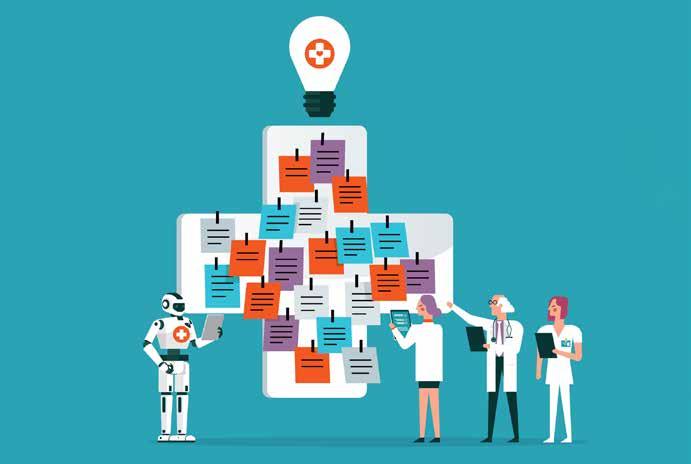
As a data-driven supply chain, we constantly seek ways to leverage technology advancements like AI to enhance our operations. Our challenge has been how to transform a largely manual, reactive financial contracting process into one powered by data and intelligence. The introduction of AI into our rebate term review process has been a breakthrough, offering a tangible advantage that is reshaping supplier relationships and controlling costs.
Previously, sifting through documents, manually comparing terms, ensuring compliance, and cross-referencing with spend data was time-consuming and prone to error. This led to missed saving opportunities, because we weren’t fully maximizing the rebate offer from suppliers. Often, organizations see slippage when rebates are uncollected or unredeemed because there was a lack of awareness of the terms or
spend. Or, there is breakage when one misses meeting the minimum requirements to meet contract terms.
Recognizing this, we embarked on an AI integration journey. While initial implementation required investment and patience, the results have been overwhelmingly positive. CSH has been able to optimize terms and reach higher tiers with key suppliers, resulting in significant cost savings.
One of the most compelling benefits is AI’s ability to transform our ability to be more proactive. We piloted the AI platform by focusing on rebate-related contract terms. By marrying the AI platform with our internal data, we not only verified anticipated rebates post-review but, more importantly, anticipated how to optimize tier attainment before the end of a performance period. This proactive insight allowed us to adjust purchasing patterns and maximize rebate potential, directly impacting our bottom line.
Building on our rebate success, we anticipate AI will prove invaluable in customizing contract requirements. The AI platform should allow us to define parameters and tolerances for key terms, ensuring agreements align with our organizational goals and risk appetite. Achieving this level of customization typically requires a large team, but AI makes it possible.
Looking ahead, we envision expanding the AI platform to review all contracts, building a “gold standard” around key terms and conditions. This will allow us to quickly identify deviations from preferred terms and ensure agreements fall within acceptable tolerance levels. This process is further enhanced by AI’s ability to significantly expedite contract reviews and turnaround times in the redline process.
In essence, AI acts as a virtual assistant, freeing up contracting teams from tedious tasks and empowering them to focus on strategic initiatives. It provides previously unattainable visibility and control, enabling more informed decisions and driving greater value from supplier relationships.
However, AI implementation presents challenges. Building the system requires investment in data integration,
1 AI transforms financial contracting and rebate management –By integrating AI into the rebate term review process, CSH shifted from a manual, reactive approach to a proactive, data-driven strategy, enabling optimization of supplier terms, higher tier attainment, and significant cost savings.
2 Proactive insights and operational efficiency – AI allows the organization to anticipate rebate opportunities, adjust purchasing patterns in real time, and streamline contract review processes, freeing contracting teams from tedious tasks and enabling a focus on strategic initiatives.
3 Future potential and strategic impact – Beyond efficiency, AI supports customized contract management, improves data-driven decision-making, strengthens supplier relationships, and positions the organization for a more resilient, patient-centric healthcare supply chain.
end-user feedback, and socialization. Data accuracy and integrity are paramount, as AI insights are only as good as the data it receives. Change management is also critical. Educating and training contracting teams on effectively utilizing the AI platform and integrating it into their workflows is essential.
Despite these challenges, the advantages of AI in healthcare contracting are undeniable. By embracing this technology, we can streamline processes, reduce costs, and position ourselves for a future where data-driven insights are at the heart of supply chain strategy. But the true potential lies beyond mere efficiency. AI empowers us to build stronger, more collaborative relationships with our suppliers, fostering a partnership based on transparency and mutual benefit. This isn’t just about saving money; it’s about building a more resilient, responsive, and ultimately, a more patient-centric healthcare ecosystem. The future of healthcare finance is intelligent, and it’s arriving now.
Shireen Ahmad currently serves as System Vice President at CommonSpirit Health, driving supply chain finance and business transformation across a 140-hospital system. She leads with a focus on profitability optimization, leveraging cost management, financial strategy, and data analytics within group purchasing organizations (GPOs). Shireen has a proven record of spearheading financial turnarounds and implementing innovative, datadriven solutions that enhance supply chain efficiency and significantly reduce costs.


















For over 140 years, Owens & Minor has navigated the ever-changing world of healthcare. We balance technology and a human touch with end-to-end expertise to help you deliver high-quality patient care. Together, we keep care moving* .
500+ product launches in 2024 | Automation and robotics | Cloud-based solutions
better manage your inventory, cash, and
Through streamlined processes that provide bigger-picture data, we work collaboratively to ensure our supply chain is more efficient and more accurate. Customers can feel confident and secure with inventory assigned at the factory level, eliminating the industry practice of arbitrary allocation.
collaborative communication
Through streamlined processes that provide bigger-picture data, we work collaboratively to ensure our supply chain is more efficient and more accurate. Customers can feel confident and secure with inventory assigned at the factory level, eliminating the industry practice of arbitrary allocation.
Dukal’s Tariff Response
Partnering with us means not worrying about product is assigned from the start of production work to exceed customer expectations decision-making and inventory planning you need, when you need it.
For decades, we have been a trusted source for medical consumables that represent a significant spend within acute and nonacute medical settings. Today with advancements in supply chain management, IT, and automation, we can provide industry-leading end-to-end supply chain visibility and transparency improving real-time accuracy to better manage your inventory, cash, and business.
For decades, we have been a trusted source for medical consumables that represent a significant spend within acute and nonacute medical settings. Today with advancements in supply chain management, and automation, we can provide industry-leading end-to-end supply chain visibility and transparency improving real-time accuracy to better manage your inventory, cash, and business.
Recent changes in U.S. tariff policy are disrupting already complex global trade challenges. No longer just a tool to protect domestic industries or raise revenue, they are now also used as geopolitical leverage, introducing new challenges that face manufacturers with unpredictable shifts.
Today’s tariff challenges demand a coordinated, multidisciplinary approach— one that brings together sourcing, quality, supply chain, and finance leaders to navigate disruption and build long-term resilience.
Proactive crossfunctional alignment
Immediately following the announcement of proposed tariff changes at the beginning of 2025, Dukal launched a crossfunctional and global effort, with teams focused on vendor diversification, risk mitigation, supply chain optimization, and strengthening stakeholder relationships.
Vendor diversification
Over the past several years, Dukal has worked to establish alternate
Building on this foundation of operational control and consistency, Dukal leveraged its in-house design team to deliver rapid turnarounds for art and packaging requests, enabling swift adjustments in response to dual sourcing or production shifts. By maintaining direct control over design and artwork approvals, the company was able to implement packaging changes quickly across multiple facilities, minimizing delays and ensuring continuity in both supply and branding.
Our team is aligned with you to identify and supply chain before they impact your customer. global team, we can act with speed and confidence decisions to maximize your efficiency and
Partnering with us means not worrying about allocation, as your product is assigned from the start of production to your dock. We work to exceed customer expectations through collaborative decision-making and inventory planning to ensure you have what you need, when you need it.
Partnering with us means not worrying about allocation, as your product is assigned from the start of production to your dock. We work to exceed customer expectations through collaborative decision-making and inventory planning to ensure you have what you need, when you need it.
Our team is aligned with you to identify and mitigate disruptions to your supply chain before they impact your customer. With full visibility and global team, we can act with speed and confidence to make proactive decisions to maximize your efficiency and avoid costly delays.
manufacturing locations for all products. While the original intent was to diversify the supply chain, this investment allowed Dukal to reduce tariff exposure significantly. Where risks persisted, the company launched an aggressive, ongoing review of the global landscape to ensure its products continue to meet the highest quality standards while remaining competitively positioned within the market.
Dukal’s dual sourcing strategy, supported by Dukal InSight, reinforces supply chain resilience and enables rapid, data-driven responses to industry changes. By coordinating production across multiple facilities and maintaining complete visibility into the supply chain, Dukal not only mitigates disruptions but also enables pricing stability, delivering customers confidence in an unpredictable trade environment.
Our team is aligned with you to identify and mitigate disruptions to your supply chain before they impact your customer. With full visibility and a global team, we can act with speed and confidence to make proactive decisions to maximize your efficiency and avoid costly delays. 5
Strong stakeholder relationships and quality standards
Dukal retains full ownership of quality and regulatory processes across every factory; these rigorous practices and continuous on-site audits safeguard Dukal’s commitment to uncompromising quality.
By combining cross-functional alignment, strategic vendor diversification, rigorous quality oversight, and Dukal InSight, Dukal strengthens supply chain resilience and stability. These efforts enable the company to respond quickly to industry changes while consistently delivering reliable, high-quality products and long-term value to customers.


Distributors and self-distributing health systems now have complete transparency of their Dukal products’ from purchase order to delivery.
Product Assigned at the Factory Level
Product Tracking at the Item Level
Compatible Excel Reporting
Automated Communication
Worldwide Tracking

Scan

> Learn more at dukal.info/insight
Leading health systems are making resiliency a day-to-day priority, blending local sourcing, data-driven insights, and collaboration to weather uncertainty.
In recent years, disruptions – from global pandemics to geopolitical tensions –have highlighted the critical need for resilient healthcare supply chains. Leading health systems are shifting away from reactive, cost-focused strategies toward proactive, data-driven approaches that make resiliency a core, day-to-day priority.
The following articles explore how U.S. health systems are rethinking supply chain strategy, blending innovation, collaboration, and foresight to build stronger, more resilient networks capable of withstanding both local and global challenges.


How HonorHealth’s Supply Chain evolved after the pandemic.
When it comes to supply chain strategy, resilience and stewardship of resources are often viewed as competing priorities. For Ryan Kirane, vice president of Supply Chain at HonorHealth, the two are more interconnected than they appear.
“If we were to do a Venn diagram, there are some overlapping areas,” Kirane explained. “At the end of the day, it is how efficient are we in securing resources, understanding utilization management patterns, and avoiding waste. Those objectives align very closely.”
That alignment has guided HonorHealth through a period of immense change. From pandemic-driven disruption to ongoing labor shortages, tariff pressures, and global instability, supply chain leaders have had to rethink how they balance efficiency, preparedness, and financial stewardship.
From crisis mode to long-term strategy
Like most integrated delivery networks (IDNs), HonorHealth’s immediate response to the pandemic was to secure critical inventory, particularly PPE. The organization built a contingency stockpile of roughly 1,000 pallets, housed by a third-party logistics provider.
But as the global supply chain stabilized, HonorHealth reassessed. “We downsized that to about 200 pallets that
we keep on site at one of our locations,” Kirane said. “We retrofitted an existing warehouse to hold those items.”
What began as a focus on gloves, gowns, and masks evolved into a more nuanced strategy. Today, HonorHealth uses its reserves more strategically, anticipating risk in specialized categories and executing bulk buys when future constraints are anticipated.
This shift reflects a larger mindset change: moving from reactive stockpiling to proactive resiliency planning.
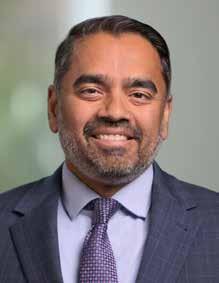
One of the most significant postpandemic changes for HonorHealth has been the creation of a dedicated
role: Program Director of Risk and Resiliency. This leader acts as the quarterback of resiliency initiatives, analyzing data, monitoring risks, and coordinating cross-functional teams.
“We did align a resource that actively, daily, weekly, monthly is curating the analytics,” Kirane said. “They help with reporting, communication, and coordination across functions.”
Those functions include logistics, contracting, purchasing, and prime distribution, which now meet weekly to evaluate backorders, recalls, and other potential shortages. This cross-functional collaboration ensures risks are addressed before they impact patient care.
HonorHealth also leverages advanced tools through its group purchasing organization (GPO) and distributors, including supply disruption management platforms. These tools offer a level of visibility that would have been unthinkable a decade ago.
“Relative to 10 years ago, we’re definitely in a better position,” Kirane said. “Before, the data was fragmented. Now we’re able to look upstream and see how much inventory is available for certain categories. It’s not perfect, but directionally, it’s much better.”
For years, just-in-time (JIT) inventory management was the gold standard,
freeing up cash flow and reducing waste. But the pandemic underscored its vulnerability.
“JIT for decades was the model that was attractive,” Kirane said. “But given the uncertainty in the environment, we are more flexible to holding buffer stock.”
weekly meetings with regional health systems and even local universities that helped fabricate face shields created an environment of shared problemsolving. Today, those meetings are more situational, convened bi-weekly or monthly when disruptions require collective action.
“I’m very curious and tracking where AI truly has an impact, but I want to make sure it’s really that engine and not just what we’ve typically used. It offers promise, but it hasn’t yet distinctly defined what we experience day to day.”
HonorHealth has since adjusted its PAR levels across sites to carry more on-hand inventory while maintaining a supplemental warehouse to rotate additional stock. The result is a hybrid model that balances efficiency with resiliency.
Even with advanced planning, disruptions still occur. Recently, HonorHealth faced a shortage of surgical blades, a category that experienced national supply chain challenges.
“Within six to eight weeks, we had a specific surgical blade that was short,” Kirane recalled. “We were able to use our resiliency tools to quickly understand the drivers, and through collaboration with other large IDNs in the Southwest, we shared product and avoided any patient care disruptions.”
This spirit of collaboration has become a hallmark of HonorHealth’s approach. During the pandemic,
“None of us is smarter than all of us,” Kirane emphasized. “Sharing best practices only helps the whole group.”
If Kirane could solve one industry-wide problem overnight, his answer is clear: more domestic manufacturing.
“More domestically manufactured product would be less impacted by
weather, political climate, or other disruptions,” he explained. “It would also support local economies. Each dollar invested locally returns 45 cents to the community, compared to 13 cents from outside.”
Still, Kirane acknowledged the complexity. While local vendors strengthen resilience and community investment, they may lack the infrastructure to fully support large categories of products. As a result, IDNs must carefully balance national and local sourcing strategies.
The next frontier in resiliency may come from artificial intelligence. But Kirane remains measured in his optimism.
“AI is a buzzword that gets utilized often,” he said. “I’m very curious and tracking where AI truly has an impact, but I want to make sure it’s really that engine and not just what we’ve typically used. It offers promise, but it hasn’t yet distinctly defined what we experience day to day.”
For now, HonorHealth’s resiliency is built on more immediate strategies: smarter inventory management, forwardlooking tools, dedicated leadership, and regional collaboration.
Ryan Kirane serves as vice president of Supply Chain Services at HonorHealth, overseeing three main verticals: strategic sourcing and engagement (contracting, value analysis, capital lifecycle), innovation (ERP systems, technology, data management, procurement), and operations (medical center teams and the Operations Excellence and Solutions group, which applies Lean Six Sigma and design thinking to optimize the supply chain). In addition, he is HonorHealth’s sustainability officer, defining sustainability as the wise use of limited resources, a mission closely aligned with supply chain stewardship.
Cardinal Health™ Lab Distribution: Products and Services
Anatomic pathology products including:
• AP storage
• Biopsy bags
• Cassettes
• Clearing agents
• Cover glass
• Cytology supplies
• Dehydrants
• Embedding materials
• Foam biopsy pads
• Formalin
• Formalin neutralizing pads
• Freeze spray
• Microtome blades
• Paraffin
• Paraffin dispensers
• Prefilled formalin containers
• Slide mailers
• Slides
• Tissue baths
• Tissue marking dye
Blood bank and hematology products including:
• Blood bank saline
• Hematology consumables
• Hematology reagents
• Plasma thawing bath and accessories
Clinical chemistry products including:
• Beta-hydroxybutyrate assays
• Sample cups
• Single-release drop blood dispenser
• Wright stain (bulk and stain packs)
Lab equipment products including:
• Centrifuges
• Freezers
• General lab equipment
• Incubators
• Lab furniture
• Lab weighing
• Blue plug caps
• Refrigerators
• Ultra-low freezers
With a broad and deep portfolio like ours, you don’t have to worry about finding the right lab products for your organization. And, Cardinal Health™ Brand laboratory products are clinically equivalent to leading national brands, so you get savings without sacrificing quality.




Lab essentials including:
• Glucose tolerance beverages
• Lab chemicals
• Lab labels
• Lab liquid handling
• Lab racks
• Lab supplies
• Lab tape
• Lab temperature monitoring
• Lab timers
• Labware
• Test tube closures
• Test tubes

Microbiology products including:
• Collection swabs
• Gram stainer supplies
• Loops
• Microbiology supplies
• Needles
• Stool collection
• Transport swabs
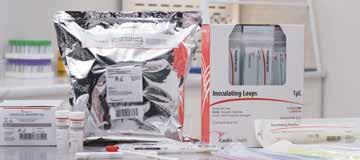
Point of care products including:
• Crypto giardia testing
• H.pylori testing
• HCG testing
• Influenza testing
• Mono testing
Specimen collection products including:
• Blood tubes
• Lancets
• Specimen bags
• Specimen containers
• Specimen cups
• Strep A testing
• Urinalysis testing

• Tourniquets
• Tube holders

Labs rely on a distributor that’s more than just a box mover. Count on Cardinal Health to provide financial savings, operational efficiencies and supply continuity through our rich history of distribution excellence and decades of lab expertise.
True transparency means no hidden costs or fees. One point of contact. Deep supplier relationships. Always-on service. That’s the Cardinal Health way.
©
When the COVID-19 pandemic disrupted global supply chains, hospitals and health systems across the U.S. were forced to reexamine the strength of their sourcing and inventory practices. For SSM Health, resiliency had always been part of the conversation, but the scale and frequency of shortages over the last five years made it a central focus of supply chain strategy.
“Resiliency was always part of the strategy, but now it’s more of a focus almost because it has to be,” said Brad Forth, vice president, Supply Chain, SSM Health. “In the past, you might see disruptions in one select category because of a particular incident. Now, it’s much broader across supply categories. That forces us to really dig in and understand our suppliers’ resiliency plans and then figure out how they can support ours.”
Before the pandemic, supply resiliency was often treated as information-gathering – helpful to know, but not necessarily a deciding factor in contracting decisions. Mike McDonough, senior director, Clinical Resource Sourcing & Vendor Management, explained that dynamic has shifted.
“Historically, we’d capture resiliency information just to have an understanding of the market,” he said. “But it didn’t really influence the decision-making process. Now, especially in key categories, resiliency is a major part of the strategy and direction we want to go.”

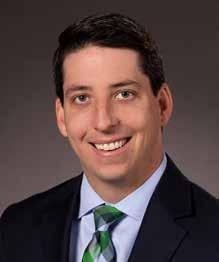
SSM Health has formalized a practice of documenting alternatives within categories and, where possible, establishing auto-substitution plans with their distributor. That means if a product goes on back-order, an approved secondary option is already in place and backed by clinician support. This avoids the delays
and disruptions that can occur when teams are scrambling to find replacements in the middle of a shortage.
“Instead of reacting, we’re embedding resiliency into how we do things,” Forth said. “It’s become day-to-day practice.”
As the healthcare industry looks toward fall 2025, global uncertainty continues to loom large. For SSM Health, two major threats to supply chain continuity stand out: categories dominated by a single supplier and the unpredictable impact of geopolitical tensions.
“In some categories, you might only have one or two suppliers,” Forth said. “That means you’re at the mercy of that supplier if there’s any disruption. Layer on tariffs or geopolitical conflicts, and you’ve got a real challenge.”
McDonough added that pharmaceuticals are a particular area of concern. Many drugs are still manufactured outside the U.S., and while manufacturers have announced plans to bring some production onshore, active pharmaceutical ingredients (APIs) are still heavily concentrated in China and India. “Even if manufacturing comes back domestically, if the raw materials are sourced globally, you’re still vulnerable,” he noted.
Tariffs add another layer of complexity to the supply chain landscape. SSM
Health has taken a firm stance against blanket tariff-related surcharges. Instead, they work closely with suppliers to understand the real impact of tariffs and, where necessary, build time-bound agreements to address those costs.
“Suppliers often take a wait-andsee approach until contracts term, then incorporate tariff impacts into new bids,” Forth said. “If there’s competition in the market, we’ll quickly take items out to bid and convert to mitigate impacts. If not, we work with suppliers to verify what the true impact is and make sure any adjustments are fair and temporary.”
Transparency is key, McDonough added. “Different suppliers have different levels of transparency. We’re trying to build partnerships where we can sit down and truly understand cost drivers, so we can take a thoughtful approach. Sometimes that means delaying long-term contracts because the tariff situation is too volatile to make an informed decision.”
One question health systems continue to grapple with is whether to prioritize local suppliers over global ones. For SSM Health, the answer depends on the category.
“There’s been a lot of buzz about onshoring or near-shoring,” Forth said. “But the reality is, a global footprint can sometimes provide more resiliency. When Baxter’s U.S. plant was hit by a hurricane, their international facilities helped keep supply flowing. That global redundancy was an advantage.”
Still, cost considerations play a role. If freight makes up a significant portion of the cost, local manufacturing
Artificial intelligence has become a buzzword in supply chain circles, but SSM Health is cautious about its application. While the system has leveraged AI to improve internal processes, it has not implemented tools to predict supply disruptions.
“I’ve discussed this with peers,” Forth said. “Even if you could predict a disruption, what can you really do with that information in healthcare? We use so many different SKUs, and unlike other industries, we can’t really do forward buys of raw materials. So I struggle with what actionable steps AI predictions would lead to.”
becomes more appealing. If not, SSM Health remains open to global suppliers who can provide redundancy and FDAapproved alternatives.
McDonough added that geopolitical risks and tariffs also weigh heavily in sourcing decisions. “Health systems are under pressure to reduce costs, and sourcing location directly impacts pricing. That has to be factored in upfront.”
While supplier partnerships remain the cornerstone of SSM Health’s resiliency strategy, collaborations with distributors and group purchasing organizations (GPOs) provide another layer of protection.
“Vizient, for example, has been negotiating safety stock programs in key categories, guaranteeing certain levels of inventory with suppliers,” McDonough said. “That’s been helpful.”
SSM Health’s footprint across four states also provides internal flexibility. Working with their distributor, they can shift
inventory across multiple distribution centers to avoid shortages in a particular region.
Forth added that broader collaboration among providers will be essential going forward. “If health systems want to do anything truly meaningful around resiliency, it has to be done in collaboration. Acting independently only gets you so far.”
Five years after the height of the pandemic, resiliency is no longer a contingency plan at SSM Health – it’s woven into the daily fabric of supply chain management. By proactively planning for alternatives, fostering transparency with suppliers, and balancing local and global sourcing strategies, the organization is better positioned to handle the uncertainty that continues to shape the global marketplace.
“The difference now,” McDonough said, “is that we’re not just reacting when something goes wrong. We’re building resiliency into every step of the process. It’s just part of how we operate.”

Roper St. Francis’ formula for resiliency includes fostering collaboration with both suppliers and nearby health systems.
When Doug Robertson reflects on his 23-year career at Charleston, S.C.-based Roper St. Francis, one theme stands out: evolution. What began as a straightforward purchasing role has expanded into a dynamic leadership position overseeing purchasing, contracting, and supply services across four acute hospitals, multiple surgery centers, and more than 100 physician practices. Today, as director of Supply Chain, Robertson is responsible for ensuring that the health system’s 680 beds remain supported by a steady flow of supplies, a task that has
grown increasingly complex in the wake of the COVID-19 pandemic and ongoing global uncertainty.
“We’ve always had the responsibility to make sure products are available at the right price and in the right place,” Robertson said. “But over the years, supply chain has been asked to take a much broader role. It’s not just about surgical packs or gloves anymore; it’s waste management, landscaping, courier services, etc. We’re engaged in making sure every service agreement delivers quality and value.”
One of the most significant lessons learned from the pandemic was the danger of depending too heavily on a single supplier. Before COVID, healthcare organizations often relied on primary vendor relationships to drive cost efficiency. But when supply lines fractured, hospitals were left scrambling.
Robertson has intentionally shifted his strategy toward diversification. “We saw how critical it was to have formal relationships beyond our primary distributor,” he said. “We always had good informal ties, but now those are formalized. We’ve signed contracts, we do quarterly business reviews, and we’re engaging more deeply. That gives us options when disruptions hit.”
This new approach reflects a broader cultural shift, moving away from an exclusive cost-driven mindset toward a more holistic view that values reliability, proximity, and resilience. Robertson points to a Texas-based mask manufacturer that kept his hospitals supplied during the pandemic. “We saved hundreds of thousands of dollars by having that domestic partner,” he explained. “Sometimes the cheapest product isn’t the best choice if it leaves you vulnerable.”
Resiliency isn’t only about contracts –community matters too. Robertson sits on the board of the South Carolina Society of Healthcare and Supply Chain, a network that began meeting during the pandemic. The group convenes supply chain leaders from across South Carolina, North Carolina, and Georgia, along with national organizations and distribution partners.
“We wanted to make sure everyone had a voice,” Robertson said. “We brought in professors, national leaders, distributors, anyone who could help us understand what was happening and what we could do about it.”
The group paused temporarily but reconvened after Hurricane Helene devastated Baxter’s North Cove facility in North Carolina, which produces 60% of the nation’s IV solutions. “That was a wake-up call,” Robertson said. “It reminded us how fragile the system still is.”
Since then, regular meetings have continued, offering a space for hospitals to share strategies, best practices, and early warning signs. “It’s been a great success and a great way for all the supply chain leaders across the state to touch base and just ensure we’re all engaged.”
Preparing for the unknown
When asked about the greatest threats to supply continuity, Robertson doesn’t hesitate. “Geopolitical threats,” he said. “Tariffs, trade restrictions, and environmental disasters are what keep me up at night. The danger is that critical items, low volume but high acuity supplies like perfusion or dialysis fluids, get held up at the border or cut off entirely. If that happens, hospitals don’t just struggle. They could be forced to shut down services.”
To mitigate risks, Roper St. Francis relies on constant vigilance. Robertson’s team monitors open orders daily, maintains open lines with distributors, and taps into tools a predictive analytics platform used by their distribution partner. “It’s proactive inventory analysis,” he explained. “If utilization ticks up slightly, we see it right away
“If utilization ticks up slightly, we see it right away and can plan. For example, when adding new surgeons, we know to scale custom pack production four to eight weeks in advance.”
and can plan. For example, when adding new surgeons, we know to scale custom pack production four to eight weeks in advance. That keeps our 30-day supply steady and prevents surprises.”
The health system also participates in Vizient’s Reserve program, a safeguard that sets aside critical supplies for participating members. “We haven’t had to use it yet, but knowing it’s there helps me sleep better at night,” Robertson said. “Pharmacy uses it regularly to stay out of the gray market, and it’s reassuring to know we’ve got that protection.”
Even with predictive tools and formalized contracts, Robertson stresses that resiliency ultimately comes down to people. His supply chain team includes an RN who works side by side with materials management. “That’s been a game changer,” he said. “She has the

Doug Robertson
clinical insight and the relationships to bring everyone together when there’s a back order or recall. Within hours, we can make adjustments and ensure there’s no gap in patient care.”
Strong local networks also make a difference. “Working with supply chain leaders throughout South Carolina has been invaluable. We’re fortunate to have such strong connections – not just to share supplies when needed, but to exchange best practices and rely on each other for guidance and support.”
If Robertson could solve one industry problem overnight, it would be to increase domestic manufacturing capacity. “That would be the simplest path to resiliency,” he said. “But realistically, it’s not possible for every category. Some supplies are too costly or environmentally difficult to produce here. It’s a catch-22. The price we demand is part of what drives production overseas.”
Still, Robertson remains optimistic. By fostering deeper partnerships, leveraging technology, and maintaining open collaboration across hospitals and suppliers, he believes healthcare can weather the uncertainties ahead.
“We can’t purchase our way out of every situation,” he said. “Resiliency comes from vigilance, relationships, and the ability to react quickly. If we keep building those strengths, we’ll be ready for whatever comes next.”
True Access is redefining vendor credentialing in healthcare.
Compliance. Trust. Visibility. These aren’t just buzzwords – they’re mission critical needs in today’s healthcare environment. For too long, vendor access and credentialing platforms have been inconsistent and often ineffective at providing a clear picture of who is walking your halls. At True Access, we changed that.

Our platform was designed to eliminate the friction hospitals experience in traditional vendor management workflows. True Access changes the paradigm by focusing on:
Ease of use for reps and hospitals alike
Intelligent automation to reduce staff and vendor rep burdens
Compliance reporting that’s accurate and intuitive
The result? Increased adoption, cleaner data, and most importantly true visibility. Hospitals that transition to True Access see an average increase of 8x the capture rate of daily representative visits
“ We were shocked at how many vendors were entering our facilities without logging visits. With True Access, we now have full visibility into who is on-site and when. We’ve moved from reactive to proactive oversight.”
– Clyde Fulks, Director, Materials Management, San Antonio Regional Hospital
These results are not anomalies; they’re becoming the new standard for our customers. With streamlined onboarding, automatic check-ins, and a smart LED lit badge that validates a rep’s compliance in real-time, health systems are finally getting the insights they’ve been promised for years.
“We’ve been using True Access for over five years, and the difference it has made across our organization is undeniable. One of the most significant benefits is its unwavering reliability. That kind of consistency is critical in a healthcare environment where access issues can directly impact patient care. When the system was deployed, we were able to reallocate an FTE back to their original role vs troubleshooting vendor access issues. We trust the system completely, and it continues to deliver value year after year.”
– Kim Moon, Executive Director Supply Chain, Tucson Medical Center
It’s Time to Expect More from Your Vendor Management Platform
Credentialing should not be a checkbox. It should be a strategic asset. Health systems that partner with True Access aren’t just switching software, they’re raising the standard for safety, efficiency, and accountability.
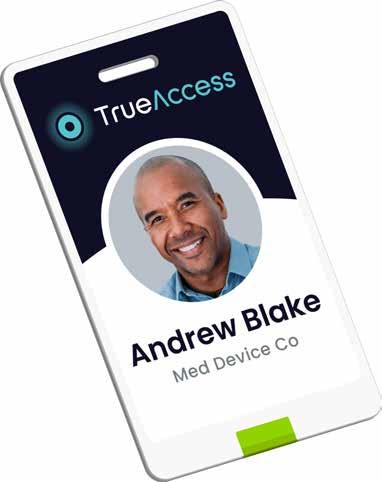




Navigating pros, cons of weaving through enduring supply chain crises, disruptions
BY R. DANA BARLOW
More than 100 years ago, the United States experienced the Roaring ’20s, a decade of cultural decadence, growth and prosperity that came to a crashing halt and ushered in a sequel decade of austerity, despair and economic turmoil.
A century later, cultural observers, historians and pundits likely envisioned the Soaring ’20s, but those expectations were dashed, if not twisted, as a few global and national crises and disasters so far mid-decade may motivate the more sobering sobriquet the Shoring and Storing ’20s.
For example, at the start of the decade, the COVID-19 global pandemic taxed and tested supply chains throughout all industries and professions, healthcare being no exception. Then cargo container ship mishaps – one blocked the Suez Canal for six days, another slammed into
a Maryland bridge – obstructing transport waterways and port access for products. In fact, the Suez Canal incident reportedly delayed transport of billions of dollars in goods by more than 400 ships. Fuel prices, labor disputes among dockworkers and trucking companies, taxes and flip-flopping tariff tactics, terrorist-related activities and a variety of weather-related phenomena only added to the market basket of mayhem.
All these events helped to poke holes in healthcare’s long embrace of just-in-time (JIT), modified stockless and stockless distribution since the 1990s and for many re-justified a return to bulk-buying and stockpiling, making overt and covert stashes a newly gilded badge of honor.
They also exposed cracks, gaps and holes in crisis planning and disaster preparations that grew out of the 9/11 terrorist attacks in New York City, Washington, DC, and Shanksville, Pennsylvania. These attacks resulted in nearly 3,000 fatalities, air traffic, ground transportation and travel grinding to a halt, access to New York City heavily restricted and the emergence of security measures that stressed supply chain fluidity going forward.
So far, healthcare supply chain executives, leaders and professionals have learned that planning and prepping strategies and tactics for geographically specific areas and varying types of crises and disruptions may not be so monolithic and standardized. Global, national, regional/state and local issues may require significantly different solutions or even minor tweaks to accommodate subtle nuances. Further, labor attitudes and workforce redirects – including hybrid scheduling, workfrom-home options and automation
technology – have emerged front and center to navigate around backorders and stockouts.
From climate- and weather-related crises to regulatory actions and policies to geopolitically motivated and terrorist-incited chaos to unprecedented operational incompetence and negligence, healthcare organizations have experienced – and will continue to face – a plethora of potential hiccups to clog the supply chain.
What they do – whether through proactive policies and procedures or post-event reactions – when the crisis or disruption hits can determine and direct future navigation.
among others, that can close roads to vehicular traffic as the bulk of distribution to warehouse hubs and facility spokes relies on semi-tractor trailers and vans.
GLOBAL: From a global standpoint, proactive measures are massive and interlinked, according to Steve Downey, vice president, Chief Supply Chain & Support Services Officer, Cleveland Clinic. They include the use of monitoring, disaster warning systems, tracking locations of supplies, centralized alerts and coordination of global stockpiles.
Downey also recommended a “clear lineage of global supply tiers, where
“ More resources would go towards preventing significant shortages if alerts were more widely broadcast, and funding and visibility to healthcare product shortages would increase.”
The Journal of Healthcare Contracting tapped several healthcare supply chain leaders to share their observations and perspectives on categories of crises and disruptions from global, national, regional/ state and local angles, highlighting potential tangible and useful solutions that sometimes involved overlapping benefits and drawbacks. Each presented viewpoints from different mindsets – one by crisis and disaster category, another by functional process and a third by local context.
This category spans floods, hurricanes, mudslides, tornadoes and wildfires,
manufacturers would disclose origin, and critical component origins down tiers. For example, a sharps container manufacturer would disclose where they make product and where the key plastic components are sourced, and that information would be available to health systems that purchase the container. Then, if a world event happened that affected the key plastic supplier, all would be notified appropriately,” he indicated.
Benefits include improving visibility and preparedness across borders; saving each health system from having to research, triage, and monitor events individually; and preventing each country from having supplies that are rare or hard to source stored in stockpiles vs. in use, according to Downey.
Drawbacks involve requiring manufacturers to disclose information they may consider proprietary and maintaining that information centrally, Downey noted. Other needs include maintaining a central service provider and resolution of data intake and infrastructure globally.
NATIONAL: On the national front, solutions include training for all health systems on the handling of supplies for disaster response, a process that requires submission to a federal agency for manufacturing location, contract manufacturing location and critical raw materials siting, Downey insisted. He also called for a standard definition of “critical” supply and for a national alert system to resolve significant shortages in geographical areas or even nationally for critical supplies.
origin disclosures would be considered proprietary and need to be maintained appropriately, Downey noted.
REGIONAL/STATE: These solutions would involve state-level emergency supply caches (e.g., linen, oxygen, personal protective equipment); mutualaid agreements between regional health systems, and prepositioned supplies based on known risk patterns, interconnected systems or standards that allow for visibility into supply stockpiles, according to Downey.
Benefits include a better understanding of local geography and climate patterns, faster resource sharing between facilities that encourage regional cooperation and shared resources, he said.
“ The market information available may lack specificity, particularly at the SKU level, which complicates the forecasting/ visibility of supply issues.”
Benefits include each health system not having to research and triage on its own, according to Downey, and that training would lead to standardized terminology and practices. “More resources would go towards preventing significant shortages if alerts were more widely broadcast,” he added, “and funding and visibility to healthcare product shortages would increase.”
Drawbacks include solutions that would not be specific to individual types of care, systems or geographies; requirements would strain resources at health systems and manufacturers; and any
Drawbacks center on limited budgets and resources, and shared risks may deplete resources quickly, he added.
LOCAL: Each organization would engage in hospital-level emergency stockpiling and continuity-of-care planning, local contracts with logistics providers and suppliers, staff training and drills for weather-related emergencies and developing and maintaining resiliency plans, Downey recommended.
Benefits include immediate response with minimal delay, greater control over
local operations and enhanced staff readiness and patient safety, he said.
But drawbacks include being resourceintensive to maintain reserves with single solutions vs. multiple areas/systems sharing the risk and costs, according to Downey. “Planning must be up to date with regular practices (tabletop exercises) so there aren’t gaps when you need to enact,” he said. There also is the risk of facilities being impacted directly by disasters and dealing with hard-to-rotate perishable inventory (e.g., medications, linens), he added.
This category spans citizen and/or structural attacks, cybersecurity violations and legislative/regularly/tariffinduced trade wars that can impact continuity of data accuracy, pricing and service accessibility.
GLOBAL: Solutions include global cybersecurity data sharing, a repository of country-of-origin data on all supplies and a supplier global cybersecurity standards/badging system, Downey suggested.
Benefits include advanced warnings and threat detection that encourage supplier cooperation and global solidarity, fast impact analysis on tariff scenarios and reduced labor on individual cybersecurity analysis by each health system, he said.
Drawbacks include data sensitivity and political barriers to full transparency, uneven participation among nations, threat actor visibility to preparedness and a reluctance to provide country of origin data due to competitive nature, he added.
Streamline ordering across product categories, control rogue spending and rely on uninterrupted service from our nationwide delivery network.

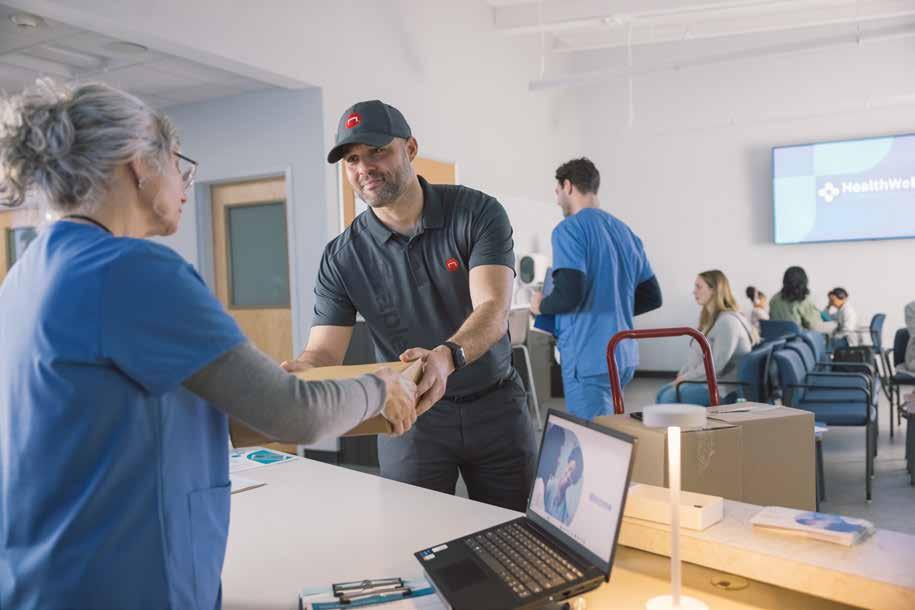
more and contact a supply chain expert at staplesadvantage.com/healthcaresupplychain

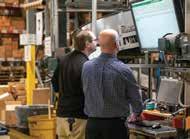
NATIONAL: Downey called for national cybersecurity response plans, supplier vetting and promotion of Americanproduced supplies as solutions to domestic challenges.
Benefits include more control over domestic manufacturing and sourcing, faster federal support in case of cyber or terror attacks and improved coordination between private sector and government, he noted.
REGIONAL/STATE: This level will need state-based cybersecurity task forces and emergency management teams, regional simulations for cyberattacks or physical threats, cross-institutional data protection and sharing and standard risk ranking system across organizations, according to Downey.
Benefits include reducing lag in identifying and responding to threats, building technical capacity at the state level and encouraging collaboration between hospitals and state agencies, he noted.
Drawbacks include varying cyber maturity across regions, overlaps or conflict with federal actions and potential struggles with funding and staffing, he said.
LOCAL: These solutions involve redundant communications and backup power systems, local law enforcement integration in hospital security planning and a single database for organization, all of which provide benefits, he emphasized.
However, drawbacks include limited technical expertise within smaller systems, budget constraints may delay upgrades and that these options require constant vigilance and updates, he added.
This category spans cargo container ship mishaps and navigational errors, labor unrest among coastal and internal ports and warehouse facilities.
GLOBAL: Because this addresses transportation by air, sea and land, the solutions involve interlinked processes that include global supplier mapping
amount of data intake and real-time monitoring, he lamented.
NATIONAL: Solutions at this level call for a national contract framework for emergency logistics (e.g., alternate air/rail freight). “Imagine a simple ‘sign me up for this service’ checkbox for emergencies,” Downey posed. Additional solutions include national dashboards for port/logistics congestion and a registry of incidents to track each one with specific details.
“Achieving timely agreement among various stakeholders across multiple hospitals can be difficult. Proprietary products or those closely tied to specific equipment may have limited alternatives, complicating the substitution process.”
and diversified sourcing; real-time logistics tracking using artificial intelligence (AI) tools, trending to determine if risks are becoming prevalent, which types, and what’s working against them; and maintaining a registry of incidents to track each one with specific details, Downey recommended.
Benefits focus on tracking movement. These options help anticipate and reroute around blockages, reduce reliance on single channels or chokepoints, improve transparency in global supply chains, reduce each system having to solve problems on their own that lowers costs and redundancy, track to see which locations, sites, providers, infrastructure or root cause is leading to multiple situations, according to Downey.
The drawbacks translate to expensive tech implementation and a significant
Benefits involve shortening response time to major disruptions and reducing the chance of system-wide shutdowns, he said.
But Downey acknowledged drawbacks that include heavy reliance on federal action, a significant amount of data intake and real-time monitoring and a high cost for maintaining readiness,” he added.
REGIONAL/STATE: This level requires designated emergency delivery routes and storage hubs, according to Downey, as well as inter-hospital agreements for supply sharing and state logistics resilience planning, all of which generate and represent benefits for providers.
Among the drawbacks are that not all regions have a robust
infrastructure and this involves complex coordination across counties or systems that are still reliant on upstream supply chain reliability, Downey indicated.
LOCAL: Within provider organizations, teams must develop and maintain facility-based surge planning for supply outages, agreements with local vendors for emergency supplies and on-site problem-solving teams that address lo-
gistical, administrative and clinical needs, Downey said.
Benefits include enabling continuity of care when outside systems fail and allowing fast, tailored responses, he noted.
Drawbacks include the possibility that resources may be quickly overwhelmed, staff may experience fatigue and burnout during prolonged outages and providers may have limited leverage in supplier negotiations, he added.

Another way to examine options is to do it from a different perspective that focuses on functionality and process, regardless of crisis or disaster. For Masai Sung, senior director, Supply Chain Support Services, Stanford (CA) Medicine, potential solutions address contracting, external/third party use, substitute products and mutual aid.
“Stanford Medicine leverages a comprehensive approach to mitigate the effects of supply disruptions through a multi-layered strategy,” Sung told JHC. “Each method has its strengths and weaknesses, but their combined use enhances resilience in securing necessary supplies for patient care.”
Sung acknowledged that combining strengths and weaknesses enables you to bend enough to absorb or maneuver around weaknesses when necessary, which contributes to resiliency.
“However, as you know, nothing is 100%,” he countered. “These strategies used in concert with each other put us in a better position and can minimize the impact for when the disruption [occurs].”
Contracting benefit: “Understanding the historical impact and response to supply disruptions for manufacturers prior to the contracting process allows us a more thorough evaluation, focusing on their reliability and preparedness through business continuity plans and the locations of manufacturing and distribution facilities,” Sung indicated. “This allows for more intentional discussion and language around reliability and supply resiliency during the contracting process.”
Contracting drawbacks: “The market information available may lack specificity, particularly at the SKU level, which complicates the forecasting/visibility of
supply issues,” he noted. “Because the supply chain is continuously evolving with M&A activity or cascading impacts within that supply category (e.g., raw materials) or issues with another manufacturer, the supplies related to the contract requires continuous monitoring. Additionally, the absence of Harmonized Tariff Schedule (HTS) codes can hinder the ability to anticipate tariff-related impacts.”
External/Third Parties benefit:
“Engaging third-party vendors is a must,” Sung insisted. “They provide access to the required intelligence and consolidated data, along with real-time tracking of disruptions caused by natural disasters or geopolitical events. This external insight can help in making informed decisions quickly. Earlier this year tariff increases were announced; however, understanding the financial impact was a challenge given the variable rates by country and the impacted products. Our third-party partners gave us a better understanding to country of origin. This information then allowed our internal analytics team to model out what the financial impact could be to the enterprise for each hospital.”
External/Third Party drawbacks:
“The data provided may sometimes be too generalized, lacking the specific details needed for immediate action, though it can still guide strategic responses,” Sung said. “Other times, the information may not hit the mark, and several iterations working with the third parties is required.”
Substitute Products benefit: “When establishing substitute products, the key is having the right clinical engagement proactively and partnership to ensure that the alternative is truly clinically equivalent,”
Sung advised. “By pre-loading clinically acceptable substitute products into the Enterprise Resource Planning (ERP) system, Stanford Medicine can quickly adapt to supply disruptions. Strong clinical partnerships facilitate the identification of appropriate substitutes based on the criticality of the supply. Stanford has established an auto replenishment process.”
Substitute Products drawbacks:
“Achieving timely agreement among various stakeholders across multiple hospitals can be difficult,” he continued. “Proprietary products or those closely tied to specific equipment may have limited alternatives, complicating the substitution process.”
Mutual Aid benefit: “Collaborating with local providers, whether through formal county arrangements or informal relationships, can ensure that necessary supplies are available to meet patient needs,” Sung said. “This approach is rooted in a shared commitment to patient care, fostering a spirit of cooperation among healthcare organizations.”
Mutual Aid drawbacks: “The effectiveness of mutual aid often relies on personal relationships and the capability of partner organizations to provide surplus supplies, which can vary significantly,” Sung concluded.
Marietta, Georgia-based Wellstar Health System uses regional and national contracting solutions to fortify local coverage and operations, according to Michael McCullough, senior vice president, Supply Chain.
“We don’t necessarily look at how a disruption happens or could happen, but more at how we maximize supply chain resiliency,” McCullough said.
Wellstar manages a 175,000-sq.-ft. Consolidated Service Center (CSC) that stores approximately 40 days stock-onhand (DSOH) of its top 3,800 stockkeeping units (SKUs). Due to tariff and trade concerns, Wellstar recently raised its DSOH to 50, according to McCullough.
“At our point-of-use PARS, we stock up to 16 DSOH, via a 2-bin kanban solution that we refer to as ‘Wellbin,’” he explained. “Wellbin is our branded BlueBin solution. We rarely get 8 days per bin, but this would be our target. Space is our greatest prohibitor.
“For mission-critical supplies, we have contracts in place where a vendor will stock 30 DSOH of our key SKUs,” he continued. In this contract, McCullough listed five elements for which the vendor is responsible:
1. Managing the DSOH as defined in the contract.
2. Rotation of stock to ensure no short dating or expiration, where necessary.
3. Will ship the product when Wellstar makes the call.
4. Other key and proprietary criteria.
5. In some cases, the DSOH is 90.
“We have a small team that is responsible for monitoring information, including backorders and other industry news,” he indicated. “This team is also responsible for subs identification and management.”
As all three organizations weather the ongoing turbulence that roils supply chain operations, each encourages other organizations to adopt what’s necessary and adapt when necessary to keep the product and service pipeline filled and flowing as smoothly and consistently as possible.
From discovery to delivery, our lab distribution provides reliable access to a comprehensive portfolio of products and services, empowering research labs to focus on what matters most: advancing the future of
Cardinal Health™ Laboratory Distribution: Advancing diagnostics, treatments, and preventative measures through comprehensive lab essential supplies.
Extensive product breadth:
• Pathology | Histology
• Equipment and instruments
• Laboratory essentials
• Chemicals and solvents
• Life sciences
• Personal protective equipment (PPE)
• Medical consumables
• Specimen collection



In 2019, The Queen’s Health Systems (QHS) in Hawaii, one of the state’s largest employers with four hospitals and more than 70 care sites, faced a daunting challenge. Its longtime medical librarian was preparing for retirement, and leadership quickly realized that replacing such a critical role would not be easy. The Hawaii Medical Library, serving the entire system, provided clinicians and staff with the evidence-based resources they needed to deliver exceptional care. Losing that support would have left a gap at the heart of QHS’s mission.
After exploring options, QHS turned to HPC International, Inc., whose HPCLibrarian™ solution offered a turnkey approach to medical library management. What began as a project-based collaboration soon transitioned into a fully outsourced service model, ensuring a seamless handoff as the in-house librarian retired. Within weeks, HPC assumed management of the Hawaii Medical Library, providing QHS with a team of expert librarians rather than relying on a single point of expertise.
The results were transformative. Instead of higher costs that typically come with organizational growth, HPC achieved a 19% reduction to the library’s budget, even as the system expanded bed count, admissions, and employee headcount from 2020 through 2024. HPC accomplished this by renegotiating vendor contracts, consolidating subscriptions, and replacing underutilized resources with higher-value alternatives. Additionally, as a Vizient GPO contract supplier, HPC helped QHS capture member rebates not available through direct hires.
Beyond savings, HPC’s model expanded access and coverage. QHS staff now benefit from seven-day-a-week support, including evenings and weekends, ensuring critical information is always within reach. The cloud-based transition of the library website provided clinicians with remote access to resources, while ongoing training sessions and workshops helped nurses, physicians, and researchers strengthen their skills in evidence-based practice.
Former QHS Vice President of Native Hawaiian Affairs & Clinical Support, Dr. Gerard Akaka, reflected on the impact:
“This was the best decision as we benefited from their expertise, experience and, importantly, management of our budget through strategic curation of subscriptions. In the past, we had one librarian who wasn’t available when on PTO. Now we have coverage 7 days per week throughout the year. My experience with HPC has been excellent and I highly recommend them.”
Now in its sixth year of service, the HPC partnership continues to provide QHS with scalable, cost-efficient library management that evolves with the system’s needs. For hospital leaders facing librarian retirements, staffing gaps, or the challenge of modernizing resource management, QHS’s experience demonstrates how outsourcing can preserve access to knowledge, strengthen clinical support, and ensure financial sustainability.
A new approach to managing your medical library that’s cost-effective and drives savings while providing the vital research support your hospital staff depend on.
HPCLibrarianTM is a one-of-a-kind service for hospitals and health systems nationwide in need of medical librarians.
HPC librarians have a proven track record of successfully:
Managing institutional libraries
Overseeing library subscription renewals
Negotiating the costs of library resources
Building virtual library websites
Providing research support to staff 7 days a week to fuel evidence-based practice and ensure compliance with healthcare accreditation guidelines and professional development requirements.
HPCLibrarianTM brings the expertise and know-how necessary to support your library with no training needed.
HPC can provide specialized support to expand your existing librarian team, or you can fully transition all responsibilities and operational oversight to HPC’s librarians who work remotely to support your staff in a virtual model.

33.3% Amazing and underappreciated resource. Makes lit review and access to scholarly articles very easy. Thank You!
A recent survey of library patrons using HPCLibrarian TM were asked how they benefited from the information provided by their HPC librarian:
62.5% Changed a clinical decision
Validated a clinical decision


How might onshoring, nearshoring, offshoring or even 3-D printing impact supply channels?
BY R. DANA BARLOW
The global COVID-19 pandemic earlier this decade uncovered in part the cloaked fragility of convenient and ready access to products and services as stockouts and backorders emerged from manufacturing- and distribution-related shortages.

As potential solutions, healthcare provider organizations willingly seemed to retreat from more advanced distribution programs, such as justin-time (JIT), modified stockless and stockless services that were embraced and favored for much of the previous three decades. Instead, they turned to their tried-and-true, but arguably less efficient, predecessors of bulk-buying and stockpiling or working more closely with their distributors if they operated
their own consolidated service centers or warehouses.
“The pandemic laid bare the vulnerabilities in global healthcare supply chains,” reflected Judy Webb-Hapgood, vice president, core tenet programs, Vizient. “While just-in-time (JIT) and stockless distribution once exemplified efficiency, COVID-19 revealed how fragile these systems were when oceans and borders separated providers from their critical supplies. In response, many
provider organizations are reexamining reshoring as a strategic tool – whether through onshoring, nearshoring, offshoring or adaptive manufacturing.”
Webb-Hapgood, a former U.S. Air Force officer with more than 25 years of distinguished leadership across the defense, healthcare, academic, and Fortune 500 sectors, leads Sustainability, Responsible Sourcing, Insight & Intelligence, Supplier Performance and Assurance at Vizient. Previously, WebbHapgood served as Chief Supply Chain Officer at the University of Miami, the Miller School of Medicine, and University of Miami Health System, where she led integrated supply chain operations and support services through collaborative engagement among academic and healthcare campuses.
Webb-Hapgood acknowledges that each path offers trade-offs in cost, availability, ethics, emissions and resilience for healthcare’s unique operational and mission-driven priorities. Adaptive manufacturing represents an official recognized term for 3D printing. [See related story, “Can 3D Printing Bolster Healthcare Supply Chains?”]
But the old-world order of bulk buying and stockpiling didn’t satisfy many for long – at least beyond the initial panic and scramble for rapidly diminishing products. Options emerged that flipped the rationale. Rather than pull more product volume in, perhaps the industry could rely on legislation and regulation to relocate the suppliers as closely as possible to the buyers to shorten the transportation channel – the concept of “reshoring.”
Back in the late 20th century, scores of suppliers had relocated raw material sourcing and manufacturing offshore to international locations, separated by
oceans to decrease costs and increase revenues (potentially profits) for operations and shareholders. The onset of COVID-19 not only affected production in those locations but also impacted distribution and transportation capabilities and efforts, due in large part to labor shortages.
This realization motivated industries, pressured by politicians, consumers and bottom-line fiscal concerns, to consider nearshoring and onshoring as relevant and useful alternatives. Nearshoring meant relocating sourcing and/or manufacturing to nearby countries such as Canada or Mexico, a strategy complicated by the Trump administration’s fluctuating tariff strategies. Onshoring meant relocating sourcing and/or manufacturing domestically, feeding the “America First” attitude undulating across the country.
ing automated mobile robots (AMRs), automated guided vehicles (AGVs), robotic arms, robotic process automation (RPA) and artificial intelligence (AI) to buttress, fortify or in some cases, replace

Judy Webb-Hapgood
“ Shorter logistics chains significantly lower transportation-related emissions. Providers gain visibility and influence over manufacturers’ environmental practices.”
Offshoring and nearshoring translated to lower labor and production costs that seemingly were not overtaken by higher distribution costs; onshoring translated to lower distribution costs but higher labor and production costs with domestic workers, buttressed by labor unions, demanding higher wages and benefits.
In the two years that followed the declared “end” of the global pandemic, providers and suppliers alike have heightened their interest in and exploration of a variety of automation tools, includ-
or succeed human labor. If anything, 3D printing – aka adaptive, additive or rapid manufacturing – remains something of a novelty in healthcare.
Regardless of the fiscal shell game, however, providers and suppliers continue to bob and weave through the pros and cons of reshoring options. What’s the best, if not optimal, choice and why?
Healthcare supply chain experts weighed in on the obvious and obscure pros and cons of onshoring, nearshoring and offshoring, along with the possibilities that 3-D printing offers.
Jeff Ashkenase, group vice president, End to End Supply Chain, Premier Inc., oversees the company’s supply chain consulting and co-management practice, and cautions against segmenting these category options across the board because he feels they can overlap, which can generate benefits for providers and suppliers.
“An integral part of any organization’s resiliency strategy involves diversification of sources,” Ashkenase told The Journal of Healthcare Contracting, “but then you have to make a commitment to them to aggregate your volume for the lowest price. In some cases, price differentials could be based on the cost of manufacturing in different countries. When incidents like Ebola and COVID emerged, many understood the strategy to diversify even if they took a percentage hit to hedge bets.
“Your diversified sourcing strategy may have involved committing to some organization or manufacturer that’s in the United States already or to a partnership with a group of [multinational] organizations, and that over time as cost pressures increase or a tariff is levied you know that that sort of commitment to diversification changes,” he continued. “You’re creating a resilient strategy that is diversified and might not be the lowest cost strategy. But you have to balance availability versus cost and evaluate that trade off.”
Ashkenase emphasizes the need for a balanced approach that explores several factors, including where the end product may be coming from and where the raw materials used in the manufacturing of those end products originate – both variables of which are magnified with fluctuating tariffs.
“Much of the volatility we’re seeing now involves not only the tariffs but also the backorders that were in place beforehand and the different ways people
are looking at supply chain post-COVID,” he indicated. “It’s creating a magnifying glass and an intensity that we haven’t seen before. If anything, this has reset the floor. People are becoming more adaptive at managing the current environment, so they’re building in processes and they’re leveraging technology differently.
“It used to be about committing to one single supplier for you to get the lowest cost,” Ashkenase continued. “Now you’re looking at diversification, you’re looking at different terms and conditions in your contracts, you’re building different processes within your organization to manage backorders to engage end users.” He adds that if people were to take a step back and look
Onshoring pros
Vizient’s Webb-Hapgood lists a litany of benefits that healthcare providers and suppliers can reap by matching domestic manufacturing with distribution.
Supply assurance and access tops the list. “Onshoring improves responsiveness by shortening the distance between production and the point of care, mitigating supply disruptions,” she said.
Onshoring impacts the environment, too, according to Webb-Hapgood. “Shorter logistics chains significantly lower transportation-related emissions,” she noted. “Providers gain visibility and influence over manufacturers’ environmental practices.”
“ From an operational perspective, we’ve set a new norm on how to manage disruptions and how to manage change. But based on where we are right now, it’s easy to feel like we’re going back to more of a diversification strategy.”
at how supply chain operated in January 2020 and compare it to how the industry and profession operate now, they’ll spot the differences in how sourcing patterns and operations have evolved.
“From an operational perspective, we’ve set a new norm on how to manage disruptions and how to manage change,” he noted. “But based on where we are right now, it’s easy to feel like we’re going back to more of a diversification strategy. Hopefully we will get to more of a middle ground where we’ve created enough resiliency onshore or nearshore to not find ourselves like we were pre-COVID.”
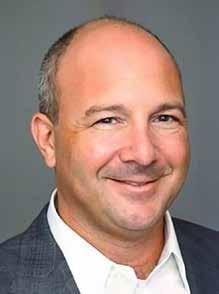
Regulatory and quality oversight increases. “Domestic production offers greater transparency and compliance with FDA, EPA and OSHA standards – critical in clinical categories,” Webb-Hapgood emphasized. “Vendor willingness to increase transparency on raw material sources and manufacturing locations is key – and healthcare providers must formalize that expectation. Contractual requirements, third-party audits and collaborative supplier relationships all play a role in transparency.”
Webb-Hapgood also sees community value as onshoring reinforces social responsibility by supporting local economies, ensuring ethical labor standards, and contributing to regional economic growth. Further, she finds that onshoring can lead to mission alignment as it supports broader institutional values around sustainability and equity among academic medical centers and integrated delivery networks.
Tom Harvieux, Chief Supply Chain Officer, St. Louis-based BJC HealthCare, finds four key benefits that onshoring offers. It gives providers and suppliers better visibility into production location specifics, reduced exposure to geopolitical risk, decreased length of supply chain channel with reduced inventory in transit and typically higher quality due to expanded FDA oversight, he indicated.
For all its benefits, domestic relocation of manufacturing poses its own set of challenges that are economically rooted.
Anticipated higher unit costs for products top the list of Vizient’s Webb-Hapgood. “U.S.-based labor and manufacturing often cost significantly more, especially without automation or long-term
volume commitments,” she indicated. While initial investment in automation may be costly in the short term, any resulting efficiencies from streamlined operations and reduced labor may generate longterm cost reductions. “Automation can support domestic production viability, which may strengthen supply assurance and responsiveness,” Webb-Hapgood noted. “The strategic value to providers – especially in categories where stockouts compromise care – can outweigh initial cost increases. The goal isn’t to eliminate cost impacts but to make those impacts predictable and value aligned.”
Webb-Hapgood points to scale limitations as another challenge. “Domestic suppliers may lack capacity for highvolume items like personal protective equipment (PPE) or syringes, requiring backup offshore options or dual sourcing strategies,” she said.
She also expresses concern about capital and contract complexity. “Engaging emerging manufacturers can lead to more complex contracting, compliance requirements and longer onboarding cycles.” This also might lead to innovation and agility gaps, according to WebbHapgood. “Onshore manufacturing may lag in innovation speed or cost efficiency compared to offshore giants with decades of category specialization,” she added.
Even BJC’s Harvieux concurs that onshoring brings a higher cost for facilities and labor, particularly during labor shortages, but the move also may not include domestic sourcing of raw materials needed in the manufacturing process. Further, he expresses concern about diversification of manufacturer locations, specifically those in areas with well-documented climate issues. Finally, domestic companies must contend with
regulatory directions and limitations on manufacturing processes.
If anything, relocating manufacturing to a nearby country, such as Canada or Mexico, represents something of a midrange compromise to onshoring or offshoring, healthcare supply chain experts indicate.
Webb-Hapgood calls it access with balance. “Nearshoring offers faster replenishment than offshore sources while achieving cost efficiencies compared to onshoring,” she noted.
and regional trade agreements can reduce tariffs, ease regulatory alignment and improve access to skilled labor.”
Harvieux emphasizes better visibility into production location specifics as a key benefit. “On-shore production is typically known, but nearshore is better than offshore,” he noted. “I would say it is 50% known, compared to offshore being 10% known.”
He also anticipates reduced exposure to geopolitical risk when “friend shoring,” even in the face of tariff threats, which may be “less volatile from other risks, such as host country limits on exports, nationalization, export fees, holidays, etc.”
“ The more you use onshoring and the more that you control the source of raw materials, the more secure your supply will be. The farther away you get from onshoring the more variables enter into the equation.”
Nearshoring also achieves regional sustainability. “Shorter shipping routes reduce emissions,” she said. “Providers gain better visibility into environmental standards and labor practices of regional partners.
Closer proximity translates into stronger oversight and intellectual property (IP) protection as well, according to Webb-Hapgood. “Easier site visits and improved legal protections support quality assurance and minimize counterfeiting risks,” she insisted.
Nearshoring also can foment improved communication and cultural fit as well as generate policy incentives and flexibility. “Proximity in time zones, language and work culture enhances collaboration – especially during crises or recalls,” Webb-Hapgood said. “USMCA
Harvieux points to decreased length of the supply chain channel, which includes reduced inventory in transit where that transit typically is 100% ground based.
Further, nearshoring may be more cost effective than U.S.-based production due to higher domestic costs for labor, infrastructure, taxes, benefits, land and other costs, according to Harvieux. He also finds value in American influence with nearshoring countries, lower governmental regulations with which to contend – influence that’s currently being tested by fluctuating tariff levels.
Both Webb-Hapgood and Harvieux remain realistic about nearshoring’s
attributes when compared to onshoring and offshoring.
Webb-Hapgood cites moderate cost savings. “While cheaper than onshoring, nearshoring still carries higher labor costs than many offshore destinations.”
Manufacturing and production may experience capacity gaps in certain categories, according to Webb-Hapgood. “Not all medical categories are mature in nearshore countries, requiring blended sourcing strategies,” she observed.
Believe it or not, nearshoring nations also experience infrastructure and political risk, according to Webb-Hapgood. “Some regions face transport delays, corruption or instability – introducing localized supply disruptions,” she indicated. Another crutch may be dependency risk. “Overreliance on a single country may centralize risk during natural disasters or geopolitical shifts,” she warned.
Harvieux recognizes that nearshoring doesn’t completely remove all geopolitical risk. For example, raw materials sourcing may still originate from a “high-risk” country, he explained. Even so, nearshoring amounts to reduced FDA oversight and a slightly longer supply chain from manufacturing and production to logistics and transportation.
Harvieux and Webb-Hapgood agree that offshoring typically represents the lowest production costs. “Offshoring remains the go-to model for cost-sensitive categories, offering labor, material and overhead savings,” Webb-Hapgood noted.
Further, a host of low-cost countries have mastered scalability and specialization. “Established hubs in Asia and Eastern Europe offer high-volume, high-quality production with built-in
economies of scale,” Webb-Hapgood said. Harvieux singles out China, Malaysia and Vietnam as key hubs. And some of those countries may subsidize their manufacturing base, which can mean lower governmental regulations and more abundant labor, he adds.
Webb-Hapgood highlights access to global talent pools as beneficial, particularly in pharma, biotech and IT-enabled services. “Offshore locations offer specialized skills at lower costs.”
Finally, 24/7 operations offer incentives. “Time zone differences can allow continuous workflow and customer service, accelerating product development cycles,” she added.
What healthcare suppliers and providers may reap in cost savings may be offset by other complicating factors.
Harvieux explains that offshoring can represent the highest geopolitical risk with extended supply channels, limited regulatory oversight, capped by the complexity of multi-modal logistics, ports and customs issues affected by labor strikes and weather, among other issues.
Webb-Hapgood points to reduced control and oversight as key challenges as well as intellectual property and data security risk. “Physical distance complicates quality assurance, supplier audits and enforcement of compliance requirements,” she noted. “Weaker legal protections can increase vulnerability to data breaches, counterfeits, and intellectual property theft.”
Offshoring also has experienced an array of challenges, starting with cost volatility and delays of late. “Fuel surcharges, shipping disruptions and fluctuating tariffs can erode initial cost advantages
and destabilize supply continuity,” WebbHapgood said.
Environmental and ethical challenges pose concerns, too. “Long-distance freight contributes significantly to carbon emissions. Labor standards and environmental oversight are often opaque, creating ethical concerns and reputational risk,” she observed.
Going forward, Webb-Hapgood cautions against embracing any one model comprehensively and universally and instead promotes something more diverse to achieve and reinforce resilience.
“In healthcare, resilience must be measured not just in cost efficiency but also in transparency, speed to patient, sustainability and ethical sourcing,” she said. “While no single model offers perfection, leaders must build a flexible, diversified sourcing strategy.”
Webb-Hapgood calls for a fourpronged approach:
1. Onshoring for critical, high-risk or high-regulatory items
2. Nearshoring for balance across cost, access and control
3. Offshoring for non-acute, high-volume categories where price matters most
4. Adaptive manufacturing for customized, on-demand innovation at the point of care
“In today’s environment, nearshoring likely represents the lowest potential for cost increases when balancing labor costs, logistics, and tariff exposure,” Webb-Hapgood told JHC . “Onshoring carries higher direct labor and regulatory costs, while offshoring – although historically cheapest – is now subject to
other potential challenges such as shipping volatility and tariff uncertainty.
“Nearshoring for manufacturers tends to offer a midpoint – moderate labor savings over onshoring, reduced transportation costs compared to offshoring, and improved transparency and control,” she continued. “From a contracting perspective it allows health systems to rebalance risk and cost – especially when paired with blended sourcing strategies that allocate high-risk, critical items to more controlled environments.”
Premier’s Ashkenase concurs with diversifying sourcing and manufacturing according to product line or type with more critical product sources originating closer to home and expanding outward from there.
“From an operational perspective, we’ve set a new norm on how to manage disruptions and change. Every organization has the ability to do it differently,” he said. “Larger multi-state IDNs have much greater purchasing power, much greater economic and financial opportunity to create these different kinds of strategies. The smaller organizations, the safety net organizations, are less able to do that. And even for the largest IDNs, the ability to maximize a strategy like that has to involve working with other organizations because any one organization isn’t going to be able to create enough of a commitment that could really maximize the economics of leveraging onshoring or nearshoring against offshoring.”
Ashkenase acknowledges that the government must play a key role, too.
“We have to figure out a way to work with the government to create incentive programs for us to do this,” he noted. “They have to understand the importance of resiliency and the role that

they need to play. Either it’s tax incentives or things like that to help facilitate and maintain the onshoring capabilities because it’s very expensive.
“The more you use onshoring and the more that you control the source of raw materials, the more secure your supply will be,” Ashkenase continued. “The farther away you get from onshoring the more variables enter into the equation. The farther away that you get, the less security you have. If you’re manufacturing in the United States you’re not worried about tariffs, but if you’re manufacturing somewhere else, you are worried about tariffs. If you’re manufacturing in a nearshoring nation, you could be worried about tariffs. The farther away you get, you’re introducing more variables, not only from a cost perspective, but also from an operational perspective, such as the logistics to get the product where you need it to be. Are you crossing an ocean or are you driving?”
Harvieux suggests evaluating the delicate balance between options carefully.
“Offshoring may not always translate to lower customer costs, but it does make the supplier more competitive when the consumer is making pricebased decisions,” he said. “Onshoring is expensive, so the key is getting to a
highly automated manufacturing process. Think diapers; they are mainly made in the U.S.A. and are competitive. We have like a 4.2% unemployment rate, so labor availability is a real constraint that is getting worse, making automation even more important,” he added.
Webb-Hapgood recommends supply chain alignment as crucial. “Providers who align sourcing with their clinical mission, community values and operational priorities will emerge stronger –and more trusted – in an increasingly unpredictable world,” she concluded.
A key part of any economic calculation, according to Ashkenase, is how an organization’s mission promotes development within its own community for product manufacturing and service provision.
“You may be looking at local service providers as your patients and staff are coming from a local community,” he indicated. “A lot of organizations are looking at what they’re giving back to their community and creating that connection, that ROI, with their community, which has value. Each organization values that differently. But it is a factor when we talk to organizations about how they want to support the economic growth of their local community.”

Cardinal Health works with leading manufacturers to offer a comprehensive por tfolio of instruments spanning lab disciplines.
Benefits of choosing Cardinal Health for your fully automated equipment include:
Exper t consultation
E xperienced diagnostic specialists help simplif y your instrumentation decisions. We customize your solutions to help enable results that improve your organization’s operational efficienc y without complicating your current processes
Analyzers are available for lease or purchase supporting: Histology Blood bank Clinical chemistr y Hematology Microbiology
Don't forget to ask about the third-par t y qualit y controls available to suppor t these and other analyzers in use at your lab

Scan the QR code now or talk to your lab sales representative to learn more about oppor tunities to fur ther automate your lab
Our comprehensive instrumentation por t folio provides single -source access to top manufac turers so you can selec t the most effec tive diagnostic instrument within your clinical laborator y discipline
Value added
We understand the challenge of needing a new instrument under budget constraints Whatever the case may be, our competitive pricing and rental rates help keep your equipment purchases affordable.
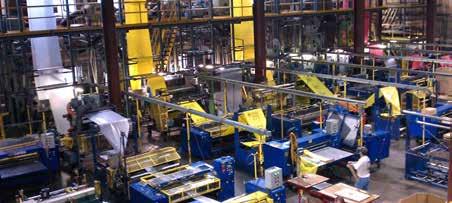
For hospitals and health systems, supply chain resilience is no longer optional – it’s essential.
For Universal Health Services (UHS), reliability in supplier partnerships goes far beyond delivering products on time.
According to Raymond Davis, Vice President of Supply Chain, UHS evaluates suppliers on consistent availability, consistent quality, effective communication, and dependable delivery. “We often have the most success when the manufacturer and distributor share product forecasting, logistics, and potential disruptions proactively,” Davis explained.
Resiliency, he added, has become a central factor in supplier selection. Managing disruptions, transparency and collaboration in real time are key. When manufacturers and distributors work openly with UHS, the health system is better equipped to build solutions quickly and prevent shortages from impacting patient care.
Domestic manufacturing plays an increasingly important role in this strategy. “In today’s environment a product’s source is as critical as it has ever been,” Davis said. UHS has prioritized partnerships with U.S.-based suppliers to strengthen resiliency and reduce risk across its supply chain.
Ultimately, Davis emphasized, every supply decision ties back to the organization’s mission. “Our role is to ensure, through our hospitals, that patients and caregivers have the products they need, at the time they need it. Domestic suppliers increase our ability to deliver in a timely manner.”
One UHS supplier partner, Medegen Medical Products, a U.S.-based manufacturer with facilities in Tennessee and West Virginia, has made domestic production the core of its mission to ensure continuity of care.
By keeping its core operations in the U.S., Medegen works closely with
hospitals on product innovation and responds quickly to shifting needs. Unlike international suppliers that face delays from overseas production cycles, Medegen eliminates lag time and reduces rework. “With domestic manufacturing, we can make enhancements in real time, with far greater quality assurance,” the company notes.
Continuity of supply is another advantage. Resin, Medegen’s primary raw material, is sourced domestically and delivered by direct rail spur to its plants. With multiple railcars stocked onsite, the company can rapidly scale production to meet demand. This vertically integrated supply chain allows hospitals to rely on timely access to critical products, even in emergencies.
That reliability was tested during COVID-19. As demand for bedpans and urinals dropped, the need for sharps containers surged to support vaccination campaigns. Because Medegen controlled its own resin and manufacturing, it pivoted quickly, producing different-sized sharps containers with short lead times. Hospitals avoided costly gaps in supply during a national crisis.
Hospitals have voiced strong support for Medegen’s U.S.-based approach, seeing it as both a safeguard and an investment in American jobs. Still, many facilities remain tied to entrenched supply contracts, a risk when disruptions occur.
Proximity also accelerates innovation. Products like Medegen’s Bariatric Bedpan and 5.4 qt Sharps Container were developed with hospital input and refined through onsite prototype testing.
For hospital leaders, Medegen’s domestic footprint confirms its commitment to resilience, innovation, and patient care.

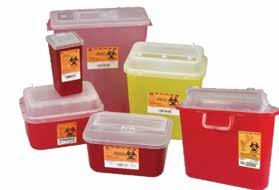
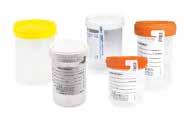

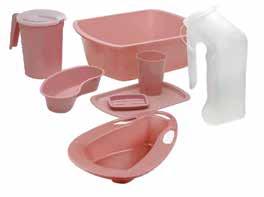
Medegen is the U.S. manufacturer of Bedside Products and core EVS Products delivering:
RELIABLE SUPPLY CHAIN: Stronger, shorter supply lines for critical essentials.
REGULATORY CONFIDENCE: Compliance with FDA and U.S. safety standards.
FAST DELIVERY: Quick domestic turnaround gets orders to you sooner.
PROVEN QUALITY: Made to rigorous U.S. manufacturing standards.
BUILT FOR AGILITY: Rapid response to urgent needs and custom requests.
ECO-SMARTER: Shorter transport means lower environmental impact.
MADE IN AMERICA: Supporting U.S. jobs and communities.


When it comes to gaining access to necessary products and services, healthcare providers and suppliers, by and large, do it by offshoring, nearshoring and onshoring, the latter two of which have generated heightened interest since the global COVID-19 pandemic ushered in the decade.
But what about “inshoring,” such as bringing the actual manufacturing and production of a device to inside your organization by way of adaptive/additive/ rapid manufacturing, commonly referred to as 3-D printing?
While 3-D printing’s origins can be traced back to the early 1980s, meaning its trajectory has run parallel to just-in-time (JIT) and stockless distribution programs, functional applications within healthcare providers and suppliers remained more like science
fiction than science fact. But much has changed within the last decade as 3-D printing technology has grown more affordable and mainstream to the point that it was a key technology used to help healthcare providers and suppliers to a degree during pandemicrelated product shortages and backorders.
Whether 3-D printing alone can pick up any slack from offshoring, nearshoring or onshoring remains debatable but worth exploring, according to healthcare supply chain experts.
Tom Harvieux, Chief Supply Chain Officer, BJC HealthCare, envisions it for limited use, such as for very specialized items like pediatric braces. He doesn’t believe it’s currently suitable for high-volume, lower cost items typically sourced internationally.
And what about legal concerns over intellectual property and patent protection? “I’m assuming 3-D printing was approved by the [original equipment manufacturer] and not bootleg activity,” he insisted. “The issue is scale and efficiency.”
Judy Webb-Hapgood, vice president, core tenet programs, Vizient, and a former Chief Supply Chain Officer for the University of Miami Health System, sees benefits and challenges for 3-D printing as an option.
First, it’s sustainable and agile. “3-D printing dramatically reduces waste and emissions as items are produced on demand, close to the point of use,” she indicated.
Second, it gives you critical access in real time. “[3-D printing] enables immediate production of custom surgical tools, anatomical models and implantable devices – supporting care continuity and precision medicine.”
Third, it offers resilience against supply shocks. “Onsite production bypasses shipping and inventory bottlenecks, particularly useful in rural or isolated settings.”
Fourth, it provides cost stability over time. “While initial investment is high, long-term cost predictability improves, especially for low-volume, high-value items.”
Finally, it supports innovation and clinical collaboration. “[3-D printing] brings engineering, surgery and supply chain closer together, enhancing problemsolving and customization,” she said.
Still, this advanced technology is not without its potential drawbacks.
For one, 3-D printing has limited scope and scale. “It currently is only viable for specific use cases. It doesn’t yet scale for gloves, syringes or high-demand consumables.”
and suppliers should explore and take advantage of all the new technologies and capabilities emerging, so long as they can help lower costs and provide more value.
“We throw [artificial intelligence] around all the time, but how do we really use AI? How do we even use ChatGPT?”
“ I’m assuming 3-D printing was approved by the [original equipment manufacturer] and not bootleg activity. The issue is scale and efficiency.”
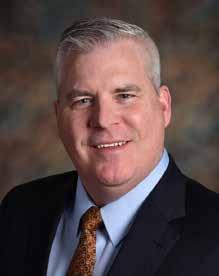
There’s also a high entry barrier. “Capital expenditure, talent requirements and FDA compliance can hinder adoption, particularly in mid-sized systems.”
Finally, cybersecurity and design standardization can be an issue. “Storing and sharing digital blueprints introduces [intellectual property] risks and interoperability challenges,” she said.
Jeff Ashkenase, group vice president, End to End Supply Chain, Premier Inc., concurs that healthcare providers
he asked. “How do we use all this technology to improve the way that we operate and save costs? I think those opportunities are there. But I think we need to be careful about seeing these as new shiny objects, so we’re just going to throw everything at them and jump right in. We have a tendency to do that, but we need to be especially careful about products that are going to touch patients.”
Ashkenase recalls how member academic medical centers in New York City during the early pandemic months were 3-D printing masks and other products for inventory. “The opportunity is there, and it could really provide value either as a method of last resort, sort of like what we had to do during COVID, or on a more ongoing basis,” he observed. “I think 3-D printing is improving a lot of the different products or capabilities or processes in other industries and we might be able to learn and generate value from that.”
Ashkenase further believes such enterprising and innovative thinking can reinforce onshoring opportunities, but people and organizations need to be incentivized to embrace that mentality.
Hearkening back to the 1980s when advanced distribution concepts like just-in-time (JIT), stockless and modified stockless programs emerged and quickly grew in popularity, adoption and implementation during the ensuing decades, healthcare providers and suppliers had yet to experience the crises and disasters that would befall the 21st century.
From terrorist activities, more frequent climate-related phenomena and a global pandemic to brazen tariff volatility and other geopolitical maneuverings, the supply chain has been bent and stretched in ways likely never envisioned.
But if healthcare providers and suppliers knew back then what they know now, might that have redirected strategies and tactics going forward?
Not necessarily, according to several experts.
“JIT and stockless models make sense when managing margin pressure in a predictable global trade environment,” said Judy Webb-Hapgood, vice president, core tenet programs, Vizient. “However, today’s climate, which is experiencing greater climate disruptions and trade volatility, demands a more resilient model that blends lean practices with strategic reserves, dual sourcing, and localized production.” Webb-Hapgood has a diverse supply chain background that spans academia, business, defense and healthcare. Previously, she served as the Chief Supply Chain Officer at the University of Miami Health System.
“In hindsight, some of the vulnerabilities exposed during COVID-19 were foreseeable but not widely prioritized,” she continued. “The 1980s were a time of deregulation and
global expansion, not of risk modeling for systemic supply shocks. That said, today’s leaders must take a more dynamic, scenario-based approach to supply chain design, one that values not just efficiency, but also readiness and care continuity.”
Tom Harvieux, Chief Supply Chain Officer, BJC HealthCare, concurs that diversity and flexibility must be stressed in today’s and tomorrow’s operating environment.
“We carry a lot more inventory now,” he said. “Inventory is being used to cover up a lot of problems in the global supply chain. Long term we may not get back to real JIT but we need to move back with more reliable manufacturing, better end-to-end visibility and collaboration, and targeted strategies to optimize our network with critical items in U.S.A., important items nearshore or offshore with multiple countries producing, low-risk being made in lowest cost countries with numerous options to jump around and avoid risk.”
Ongoing interest in advanced distribution strategies continues based on provider proximity to manufacturers and distributors as well as warehouse and storeroom space that can make those approaches the right thing to do for them, according to Jeff Ashkenase, group vice president, End to End Supply Chain, Premier Inc., but they just must be assessed differently.
“Everyone used to think that the answer to everything was JIT,” he said. “But I think that there are a lot more variables that go into it right now. We get asked about the impact of tariffs and what should be done. Well, what’s today? Tuesday? Because I can tell you one thing today, and tomorrow it’s going to change.
“I think what all of these things have really reinforced to us is the need to be proficient at the fundamentals,” Ashkenase continued. “What am I buying? How much am I buying? Who’s using it? What are the substitutes and where do I get them from? How much do I have on hand? What are my burn rates? I mean, you’re never going to be prepared for every scenario, but that really jump starts you on the ability to manage the uncertainty, which I think is becoming the new norm.”
Ashkenase encourages the use of a war room structure that assembles all the key clinical, financial and operational players in a room to project various scenarios on a viewscreen and run those scenarios through a variety of supply chain models to predict impact on product access and availability. In late July during Premier’s annual Breakthroughs conference, attendees saw demonstrations of the organization’s Supply Disruption Manager technology that enabled the prediction of shortages.
“In those early weeks of COVID, I think we were very reactive,” he recalled.
“And obviously we had to be as we were chasing our tails. With this, you only need an hour or two to go through these scenarios and models to expand minds and have some fun at it. We’re already doing projects like this for cybersecurity issues. Many organizations already have emergency management command centers and processes in place to leverage the technology and explore realistic scenarios.”
Imagine being able to assess the health of the U.S. medical supply chain with a single glance. That’s the idea behind HIDA’s Traffic Protocol Partnership, a joint effort with federal agencies to develop a color-coded system (green, yellow, and red) that signals the operating status of the medical supply chain.
This “supply chain traffic light” was put through its paces at HIDA’s recent Resilience and Preparedness Summit, where healthcare industry leaders and federal officials participated in a series of tabletop exercises simulating realworld disruptions. The scenarios were designed to stress-test the protocol across multiple types of supply chain shocks: a hurricane impacting East Coast ports, cybersecurity attacks on the West Coast, and retaliatory tariffs imposed mid-crisis.
The exercise proved the value of the protocol – but also highlighted areas for improvement. Participants walked away with a shared understanding that while the framework shows promise, fine-tuning is needed to make it a reliable, shared decision-making tool during times of crisis.
Three takeaways emerged:
Participants noted that alignment on key terms is essential for consistent situational awareness.
A major example: the term “allocation” means different things to different organizations. Without a shared definition, stakeholders had difficulty agreeing on when the protocol should shift from green (normal operations) to yellow (moderate disruption). Establishing a common language across public and private sectors is a necessary next step.
One of the most valuable aspects of the exercise was the ability to isolate different types of stress. Participants agreed on the importance of distinguishing among demand shocks (such as a surge in PPE use during the COVID-19 pandemic), supply shocks (like manufacturing disruptions from hurricanes), and logistical shocks (including port closures, cyberattacks, and labor actions). Understanding how each type of disruption affects the broader supply chain enables better mitigation strategies and more targeted responses.
HIDA’s strong relationships with federal partners were a key strength during the exercise. Participants drew on real-world experiences to shape their decisions, emphasizing the need for ongoing collaboration. The protocol is not a static tool – it will evolve. HIDA plans to refine it with continued input from both industry and government, including at the upcoming 2026 MedSupplyChain Conference, where the next iteration will be put to the test.
In today’s complex and interconnected healthcare ecosystem, having a shared framework to assess and communicate the state of the medical supply chain isn’t just helpful – it’s essential. With continued input and collaboration, the Traffic Protocol Partnership has the potential to become a vital tool for readiness and response.

By Christina Lavoie, Director of Supply Chain Policy, HIDA

All from a single source.
Running an orthopaedic trauma service never slows down. Every choice—from patient care to inventory and cost control—shapes outcomes. That’s why we created Alliance, a value-added program designed with trauma care at its core.
Alliance simplifies trauma procurement by connecting patient care and supply chain management. You can pick the right blend of strategic contracting, inventory management, education, and implementation support to fit your service line, giving you flexibility and control from the start.
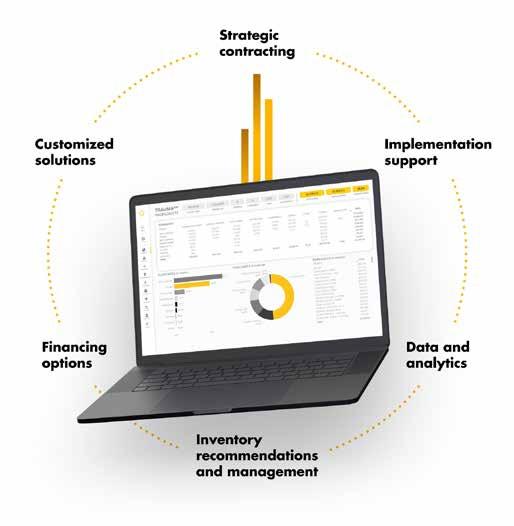

Alliance helps you take control of trauma care in ways you’ll wonder how you ever managed without.
Maximize contract value with options that drive compliance, enhance savings, and ensure you’re getting the most from your agreements -- all while simplifying purchasing.
Gain a clear view of your trauma service line with easy-to-understand data helping you to optimize spend and uncover opportunities to improve efficiency and outcomes.
Flexible financing solutions that help you acquire essential trauma equipment today while preserving cash flow for the future, so financial constraints don’t slow down patient care.
From planning to execution, our project management team helps streamline transitions, align key stakeholders, track compliance, and provide real-time guidance.
Take charge of your inventory with tailored solutions that maximize value, reduce waste, and right-size your inventory to ease space and sterile processing constraints.
Our trauma experts work alongside you to develop individualized strategies, tackling your biggest challenges with solutions designed to fit your team’s unique needs and goals.

The healthcare supply chain runs on trust – trust that vendors are qualified, compliant, and safe to enter facilities. But while hospitals drown in rising costs, some vendor credentialing companies are quietly gouging their customers with zero added value.
Let’s cut through the noise.
The Great Credentialing Price Gouge is Far-Outpacing Inflation
The healthcare vendor credentialing landscape isn’t just evolving – it’s being upended. As hospitals and health systems lean harder than ever on third-parties, the stakes for compliance, security, and efficiency have skyrocketed. So why are some companies charging more while delivering less?
From 2022 to 2025, U.S. inflation climbed 9.84%, according to the Consumer Price Index (CPI). Meanwhile, vendor credentialing costs rose at a far more accelerated rate. Some companies hiked prices 15% or more with no real innovation to show for it.
A quick analysis shows:
Company A: Annual price bumps, same old tech.
Company B: Acquired a competitor, then jacked up rates.
Company C: Hasn’t raised baseline prices since 2019.
We are undoubtedly witnessing an across-the-board increase in costs for a host of reasons…but is there enough
justification to place that burden back on hospitals and their vendors? Especially in times when they are facing so many challenges. What added value is coming with those exorbitant fees?
I had to know: How does one company keep prices flat while others keep squeezing their customers? So, I dug deeper into Company C. As it turns out…they just refuse to play the same cash-grab game the competition is in the middle of.
Value vs. Price:
One Vendor Credentialing Company Getting It Right
As I began this research, I had the opportunity to sit down with Mickey Meehan, CEO of Green Security (the aforementioned, Company C), and a nonconformist in the credentialing world, to better understand how they’re flipping the script. Meehan’s playbook is refreshingly blunt:
1 No gimmicks. Their baseline price hasn’t budged since 2019.
2 Tech that works. Fast implementations, 24/7 support, and workflow integrations aren’t “premium” add-ons—they’re standard.
3 Transparency. No hidden fees, no post-sale surprises.
“It’s simple,” Meehan explains, “just deliver more value than you take. Credentialing has historically been treated as a compliance check-the-box exercise. On the other hand, we have an obligation to our customers to improve access controls and compliance measures by way of cutting redundancies and enhancing upon vendor relationships.”
Green Security’s leadership remains committed to transforming the vendor credentialing experience. “We hear all the negativity out there around vendor credentialing,” said Meehan. “And frankly, we believe we’re the only ones truly listening and taking it seriously.”
Their mission? To become the most loved vendor credentialing company in the industry—by health systems, vendors, and everyone in between. “That’s why we’ve kept vendor pricing unchanged for the past six years,” they added. “We only introduce add-on products that deliver real value to the vendor community.”
Looking ahead, Green Security promises a wave of innovation. “Over the next 12 months, you’ll see game-changing advancements that make credentialing faster and more seamless for hospitals and vendors alike, while continuing to uphold the safety and compliance standards required by CMS, DNV, and the Joint Commission.”
Healthcare facilities aren’t just managing sales reps anymore. Service vendors, temp staff, and consultants – they all need secure, compliant access to health systems.
And with increasing rates of workplace violence incidents, safety isn’t optional.
All-in compliance: More than ever, healthcare providers are cracking down on who’s entering their facilities. Meehan’s take: If you don’t know who is entering your facilities and when – you’re at risk.
“A credentialing program is only as solid as it’s compliance.” Meehan added that they are “seeing an uptick in hospitals requiring access control for their service vendors. Not just for the benefit of upholding safety policies, but to verify when services are provided to validate billing against service level agreements.”
It’s apparent that the depth and breadth of individuals requiring credentialing has also expanded dramatically. We’re seeing supply chain managers, specialized tech consultants, dedicated security personnel, not-so-temporary clinical staff, and countless other individuals not directly employed by the healthcare provider entering facilities in unprecedented numbers. Crucially, many of these “vendors” now have access to highly sensitive data or critical areas directly impacting patient care. There is –and rightfully so – a considerable degree of scrutiny being placed on ensuring that every single one of them operates with the highest level of integrity and compliance.
The organizations taking the administrative burden away from hospitals and customers are rising to the top. A significant emphasis is now being placed on standardization and interoperability, mirroring the expectations consumers have for all user-friendly applications.
To that end, Meehan talked a lot about Green Security’s “commitment to continuous innovation and roll out of differentiating features.” For example,
the company offers – or plans to offer – advanced functionalities like “app integrations to reduce vendor touchpoints, continuous monitoring and verification, and 24/7 customer support.” Our research also found Green Security has emphasized its use of centralized systems, the implementation of contactless checkins, the strategic adoption of Artificial Intelligence (AI) for enhanced efficiency, and the critical capability for real-time verification – functionalities that are often taken for granted in other industries.
“Our industry absolutely needs to be reducing the administrative burden on vendors, rather than imposing additional complexities,” Meehan said. “The future of credentialing is not about just what it can do for hospitals, but how it also supports their vendors alike. For example, touchless check-in eliminates redundancies, mobile-apps for on-the-go spot checks, and a continuous model strips away the need for long drawn-out diligence.”
Beyond the obvious “table stakes” like robust vendor credentialing and visitor management, Meehan suggests that those in the market for a partner evaluate the depth and breadth of critical credentials like annual background checks and national watchlist screenings as a standard. “Look for tech advancement like seamless EMR integration, RFID-badge integration for your access control and compliance program.”
Regulatory requirements are a moving target, shifting at both federal and state levels. For understaffed healthcare providers, keeping up isn’t just a headache – it’s a full-time job. Many (not all) vendors, meanwhile, often see evolving rules as
bureaucratic red tape, not realizing that non-compliance can grind operations to a halt, delaying care and facility access.
The better credentialing partners are helping providers understand what actions are required to increase compliance and offering to scale and grow together. As Meehan explained, “we are in the business of meeting hospitals where they will be in five years, not just where they are today. Yes, compliance is the cost of doing business – but it shouldn’t be the cost of sanity. We make sure it isn’t. We’ve witnessed vendor credentialing evolve from what was often a purely administrative, manual task focused merely on identity and basic qualifications, into a highly dynamic, technology-driven, and deeply integrated risk management function that is absolutely critical to all provider operations.”
Hospitals are under siege from every direction – shrinking margins, staffing shortages, rising patient demands. The last thing they need is to be forced to pay up for tools that add little value.
By prioritizing transparency, innovation, and real support, Green Security is helping hospitals move beyond outdated systems and into a future where compliance is seamless, secure, and smart.
Healthcare has enough financial headaches. Vendor credentialing shouldn’t be one of them.
Green Security’s software cuts costs, boosts compliance, and actually works.
See why hospitals are switching: gogreensecurity.com

BY JOHN STRONG, CO-FOUNDER AND CHIEF CONSULTING OFFICER, ACCESS STRATEGY PARTNERS INC

Do well-intentioned efforts to define clinician preferences lead to higher costs?
As a gardener I have strong product preferences. I know the exact brand of fertilizer I will reach for, the type of lawn seed I need and where to obtain the best compost.
Clinicians can often be much the same. They know which syringes they prefer, which tape sticks the best, and what I.V. tubing works the best for their needs.
Value analysis rightly targets high value categories such as cardiology, orthopedic and surgical services products. Vizient projects that surgical services products will have a projected inflation rate of 2.97% in 2026, almost double the entire category rate of inflation of 1.68% 1 With a variety of factors influencing supply chain’s ability to lead product evaluations, as well as product conversions, it gets easy to overlook the rate of inflation in smaller disposable items. It all comes
down to time and resources at the end of the day.
The Kaufman Hall supply expense per adjusted discharge shows a 3% increase from May to June 2025, and an 8% supply expense increase year over year through June 2025.2
With attention focused on high-cost items, are we suffering from marginal price increases on thousands of highvolume, low-price items that we might consider low-value but add up to millions of dollars of expense for hospitals?
When I worked for national group purchasing organizations over the years, we were always very proud of gaining “member input” into product decisions both large and small. I’m certain they still are today. Our members had the opportunity to “vote” on products they were most interested in seeing on contract. With the consolidation to just three national GPOs, and member preferences often for market-share leading products as well as the factors in Table 1, are we inadvertently paying far too much for “small” items that add up to millions of dollars in additional spend? Should we be paying more attention to some of these items –or is everyone too overwhelmed with supply shortages, recalls, and other daily
Table 1.
Factors impacting meaningful product evaluation of small disposable items
Labor shortages
Drug and supply shortages
Fear of missing rebates
Staffing reductions and time to conduct evaluations
Long contractnegotiation cycles
Supply chain interruptions
Fear of missing share back funds and fees
Fear of missing compliance gateways for “best” pricing
Time required for “special” projects
business to take a careful look at some of these items?
Perhaps it is time to refocus for a few months and look at the pricing history of some of these products – and what could be available on the market.
Product standardization and supplier consolidation
I used to say that “nothing gets a supplier’s attention like the threat of losing the business.” Unfortunately, you must do that from time to time so that they believe what you’re saying. Product standardization is a sound supply chain principle, but it shouldn’t be forever either. As we become more standardized, particularly with large market share suppliers, are we inadvertently paying higher prices than we should for similar products that may perform as well?
Supplier narrowing and consolidation can also be a sound strategy. That can’t be forever either, because incumbents who have been “standardized to” and “consolidated in” have far less incentive to offer better pricing and more overall value than those hungry for new business.
In today’s world it is increasingly hard to balance all the competitive factors in the healthcare supply chain. When you consider all the challenges identified in Table 1, some days it may feel just good enough to have the right product at the right time in the right place.
It’s time for federal action regarding Right to Repair laws
$4 billion to $8 billion
– Estimate of the annual cost of servicing medical equipment annually in the U. S.3
Now that all 50 states have introduced Right to Repair laws – and seven have passed them – perhaps the federal government should consider a uniform law for the entire United States instead of a patchwork of various laws. For years the suppliers of clinical capital equipment and their lobby have successfully defeated these types of law. Wisconsin was first to introduce its law in February 2025.4
Unfortunately, many of these laws only focus on consumer goods and electronics, and some states have changes pending to existing legislation.
Attempts to self-repair or hire third party services are sometimes restricted by manufacturers who withhold parts lists, specialized training and access to service manuals. Unfortunately, for smaller hospitals that only have a single unit of some equipment, this means delays in service, disruptions in patient care and lost revenue when patients seek care elsewhere. Often it also leads to the “easy” decision of just having the Original Equipment Manufacturer (OEM) service it – often at a higher cost.
Group Purchasing Organizations and state hospital associations need to consider efforts to build awareness of this issue in Washington. These restrictions impact patient safety and repair and service costs across the U.S. It’s time for federal action, create more competition and reduce the cost of providing repairs and service.
Planning and data essential for successful negotiations
“You’ve got to do better than that.”
– Dick Rand
“You never know until you ask.”
– Pete Laubach
As Americans, we love to negotiate. With all the consumer data available today, having the right information to purchase new electronics or an automobile has never been easier. Whether you are buying or selling in the healthcare supply chain, careful preparation can usually lead to the desired results. Experts agree that spending time preparing is key to the results you want.5
Determine your exact needs collaboratively with the stakeholders and experts*
Set a high level of expectations for the outcome
• Determine probable costs of equipment options desired and factor into value*
Consider your maximum and minimum ranges for settlement
Gather data*
• Past/present purchases
• Planned future growth and purchases
• Determine Total Cost of Ownership (TCO) and compare
• Current/proposed service plans
• Examine warranty value/extensions at no cost
What are your arguments and counterarguments*
Test your ideas with colleagues*
Prepare summary(s) of your position(s), backed by data in handouts or slides
Write and distribute an agenda
• You control the agenda
1 Vizient “Spend Management Outlook”, Summer 2025 p. 61.
• Write the agenda to enhance your position
• Determine your opponent’s bargaining position
Have your team present.* Assign a detailed note-taker
Agree on the agenda as distributed; modify as necessary
Ensure opponent has necessary limits of authority to do the deal**
Determine your opponent’s position
Obtain areas of agreement and lay them aside*
Solve for each other’s problems
Bargain
Reach agreement and a Memo of Understanding-and sign by both parties
*Negotiation is a team effort, and elements flagged above require team efforts, along with others. Having experts at the table to debunk your opponent’s bargaining position is central to success and taking issues off the table.
**Do not accept “I’ll have to get back to you on that.” Your opponent either has authority or not. It is generally a good idea to verify that attendees will have the necessary authority for making decisions during the negotiation. If not, reschedule or suspend the negotiation and have them bring the staff with the necessary authority.
For very large purchases, face-toface negotiations are generally preferred. If you need to use a virtual system, be
Table 2.
Example negotiation team for purchase of cardiac catheterization laboratories
Purchasing executive
Cardiology Department
Chair and/or Administrator
One or two physicians who are heavy users
Clinical engineer
Finance
Others could include information technology, technologists, engineering.
prepared with examples and handouts just as you would in person. Use facts to back up your position, including equipment up-time, Total Cost of Ownership, service costs and customer service issues. Be certain to take careful notes of areas for agreement. I had a situation where the opponent went to my boss and said they had not really agreed to some of the details of the negotiation. My four pages of notes assured him they had agreed, and I received full backing.
The result was the supplier rescinded the offer because it had gotten too expensive for them.
Finally, NEVER negotiate with email or text for large purchases. It can lead to giant misunderstandings and cause delays that were unnecessary.
2 KaufmanHall and Associates, “National Hospital Flash Report”, June 2025. Accessed September 3, 2025. © 2025 by KaufmanHall and Associates.
3 www.ifixit.com/News/108371/right-to-repair-laws-have-now-been-introduced-in-all-50-us-states
4 Adopted from Center for Management Programs, “Negotiation for Healthcare”, © 1982.
5 Research from 25 articles by Grok with extrapolation to bring numbers forward, accessed and calculated on September 4, 2025, at 2:56 p.m. CDT. Available on request.
Rush University Health System’s inaugural Supplier Diversity Summit sparks new pathways for local vendors.
In a bold move to reimagine how healthcare institutions engage with their communities, Rush University System for Health recently hosted its first-ever Supplier Diversity Summit – an event designed not just to network, but to transform. The initiative aligns with Rush’s Anchor mission, which stems from its involvement in the Healthcare Anchor Network and its signing of the Impact Purchasing Commitment.

The goal of the summit was to promote equity by giving local and diverse vendors direct access to sourcing managers and decision-makers, helping to eliminate longstanding barriers these businesses face when trying to enter the healthcare supply chain.
Rush went one step further. Recognizing that contracting opportunities may not always be immediately available, the health system expanded the summit’s impact by inviting other hospitals in the Illinois Medical District, including institutions like Northwestern, to participate. The event was structured almost like a “reverse expo,” said Mariem Ruiz Martinez, manager of Strategic Sourcing, Rush University Health System. The structure allowed vendors to connect directly with multiple hospital supply chain teams and increase their visibility and opportunities beyond Rush alone.
“When you’re starting out as a small local business, especially on the West Side of Chicago, it can be challenging to know who to contact or how to showcase your product,” Ruiz Martinez said. “We wanted to eliminate that barrier and serve as a hub where hospital supply chain managers and directors could connect directly with vendors, learn about their offerings, and exchange contact information.”
In addition to networking, the summit emphasized education and support. Rush partnered with organizations such as Allies for Community Business, and Vizient, their group purchasing organization (GPO), to help vendors understand complex procurement systems and what it takes to become a GPO vendor. This exposure not only helped vendors expand their potential customer base but also provided critical insights into growing and sustaining their businesses. Ultimately, the summit aimed to be a hub of opportunity, supporting both supplier diversity and Rush’s mission to invest meaningfully in its local community.
“The energy in the room was amazing,” Ruiz Martinez said. “Everyone was genuinely enthusiastic about connecting with our community vendors.”
Since the pandemic, Rush has significantly evolved its approach to strategic sourcing, shifting from a purely cost-focused model to one rooted in community impact and long-term partnerships. Ruiz Martinez said said that Rush is not afraid to be a vendor’s first customer if it means supporting local economic development.
A prime example is its partnership with Fillmore Linen, a West Side Chicago company that provides sustainable, cost-effective, and locally sourced linen services. Rush prioritizes initiatives that not only serve operational needs but also foster thriving local communities – often embedding local hiring requirements into contracts even when the product itself isn’t locally manufactured.
The decision to partner with Fillmore Linen was not only a practical move –
addressing the risks of relying on a single out-of-state linen supplier – but also one grounded in sustainability and community investment. By sourcing and laundering linens locally, Rush reduced pollution from long-distance transport and created jobs in the West Side community. The initiative

examples reflect how Rush now evaluates sourcing decisions through a broader lens – considering not just price, but also community investment, supply chain resilience, and long-term sustainability.
When evaluating suppliers, Rush considers a comprehensive set of criteria: community impact, sustainability practices, supplier diversity, and cost. Community involvement remains a top priority, but the organization is also intentional about embedding sustainability into its procurement practices. Internal teams have aligned around these values, using them as part of a structured decisionmaking process. This shift represents a broader, mission-driven approach to sourcing – where financial savings are important but must be balanced with social and environmental responsibility.
Cost savings are always balanced against quality, reliability, and innovation, all of which are deeply embedded in the
“It’s no longer just about cost savings – we prioritize strengthening our community and supporting local vendors.”
aligned with Rush’s broader Anchor mission, reinforcing the idea that strong local suppliers strengthen the entire healthcare supply chain network in the area.
This philosophy also extended to Rush’s distribution strategy. While Rush has one primary distributor, Rush partnered with a smaller company to open a distribution warehouse on the West Side specifically to support Rush’s needs. The contract included stipulations for local hiring, creating jobs in the community while improving logistical support. These
organization’s mission and culture. Ruiz Martinez explained that while the healthcare industry faces increasing pressure to cut costs, Rush uses its purchasing power strategically – not just to save money, but to influence positive change. By leveraging their GPO, Rush also leverages its voice, often requiring vendors to commit to local hiring or sustainability practices, even when cost savings aren’t available.
Quality is never compromised in favor of cost. In fact, quality is so foundational to Rush’s culture that
leadership has never had to be convinced of its importance. For example, Ruiz Martinez shared that Rush is currently working on eliminating harmful chemicals from eight high-spend product categories. So far, three have been completed, and all were either cost-neutral or delivered savings. These initial projects were carefully selected for their feasibility and used as a learning model to educate clinical staff on the health impacts of certain chemicals. The collaborative approach with value analysis committees has helped ensure alignment across departments, reinforcing a shared commitment to patient safety and environmental responsibility.
Looking ahead, Ruiz Martinez acknowledged that the more complex product categories will likely involve higher costs due to clinician preferences and product functionality. However, Rush is prepared to absorb those costs where necessary, thanks to savings realized in other areas and their commitment to doing what’s right for patients and communities. The organization’s unwavering focus on quality and safety, even in the face of budgetary challenges, reflects a values-driven sourcing philosophy –one that places people and outcomes at the center of procurement decisions.
“Wherever possible, we’re focused on building local partnerships,” she said. “But in some cases, we have to take a more holistic approach – not just looking at cost, but considering factors like whether a vendor is local, how it benefits our community, how it supports supply chain resilience, and whether it can be a sustainable long-term partner.
“Our approach has really evolved over the past few years, especially since COVID,” Ruiz Martinez continued. “It’s
no longer just about cost savings – we prioritize strengthening our community and supporting local vendors.”
Ruiz Martinez noted several positive outcomes from this year’s summit, including vendors securing contracts in hospital gift shops and participating in new RFPs. One initiative included a scrub vendor expo where hospital staff could meet local suppliers directly, creating a space for organic, employee-driven vendor engagement. These real-world touchpoints have helped translate networking into meaningful economic opportunity for small businesses.
Rush is planning to host another Supplier Diversity Summit in 2026, building on the success of the previous one. Ruiz Martinez emphasized Rush’s continued commitment to being a leader in the local community by fostering
partnerships between small, diverse vendors and hospital supply chains.
Ultimately, the summit’s true value lies in its ability to foster genuine, in-person connections between local vendors and hospital supply chain leaders. Ruiz Martinez emphasized that many small businesses don’t know who to contact or how to break into the healthcare space, and that in-person exposure can make all the difference.
By bringing together category managers from Rush and other medical institutions, the summit created a collaborative, inclusive environment where vendors had the opportunity to form lasting partnerships – even if Rush itself didn’t have an immediate opening.
“We aim to remain a leader in our community by strengthening our connections with other hospitals,” she said. “Rush has consistently been innovative, especially in projects that venture into areas where others may be hesitant to do business.”
Domestic manufacturing plays an important role in Rush University System for Health’s current sourcing strategy, particularly in light of rising tariffs and global trade uncertainty. Ruiz Martinez explained that while tariffs are top of mind, Rush has been fortunate to already have contracts in place for many product categories affected by them. Their GPO has been instrumental in navigating these challenges, and for items that fall outside of existing contracts, Rush actively monitors them through a dedicated dashboard to assess tariff exposure and identify alternatives. When feasible, Rush seeks to pivot to U.S.-based manufacturers or secure new contracts that help mitigate tariff-related costs. Although the healthcare supply chain still faces many unknowns, the organization’s proactive approach and contractual protections have allowed them to avoid major disruptions. In cases where changes were necessary, shifting to domestic suppliers has been relatively smooth. Domestic sourcing remains a strategic priority, particularly for new product categories, and is part of a broader effort to build a more resilient and locally anchored supply chain.
BY R. DANA BARLOW
One of the more endearing – and enduring – examples of supply chain success involves a familiar entity illustrated historically by a stylized blue eagle – the United States Postal Service.
The venerable Benjamin Franklin – renowned statesman, notorious publisher, and energetic kite flyer – may have been appointed the inaugural Postmaster General in 1775 to oversee the U.S. postal system, but the formal and official establishment of the Postal Service in July 1971 cemented the function and agency as a national icon, treasure and supply chain vital sign.

Between those two historical tentpoles saw the emergence, adoption and implementation of a number of industrychanging events – from postage stamps debuting in 1847 to registered mail eight years later, followed by the Pony Express in 1860, then postal cards, commemorative stamps, rural free delivery (RFD) and parcel post throughout the rest of the 19th century. Airmail service began in 1918, then daily residential delivery in 1950 to ZIP codes in 1963 and Express Mail in 1970.
The year 1992 saw self-adhesive stamps introduced nationwide, then a public internet site two years later. Come 2004, the Priority Mail flat-rate box became an option, then the Apple iPhone app in 2009 and the expansion of Sunday package delivery in 2013.
Along the way, the U.S. postal systemturned-Postal Service encountered the emergence of several key competitors, including the American Messenger Co. in 1907 (which became United Parcel Service Inc. a dozen years later), Fred Smith’s Federal Express (now FedEx Corp.), predating the official Postal Service by nearly two months in May 1971, and then Amazon Prime in 2005. Let’s not forget the debut of computer-to-computer electronic mail (email) via the ARPANET in 1971 either.
While the U.S. postal system-turnedPostal Service may be the oldest mail and package delivery agency among a quartet of giants, the other options clearly ramped up the competition, stretching the possibilities of overnight and same-day deliveries as well as the use of online technology to streamline performance and process efficiencies.
Sending and receiving mail and packages was and is considered essential to business, commerce and cultural growth and development. To be essential also means you need to be reliable – just like the friendly neighborhood mailman (you likely know his or her name, too) in the Jeep or van showing up on your doorstep or the FedEx, UPS and Amazon Prime package trucks that pull to the curb outside your house and rile barking dogs.
Essential and reliable. Two key attributes. Supply chain is the equivalent as it is – and should be – essential and reliable. Just as ordinary citizens would be remiss without daily mail or packages from someone or somewhere, clinicians, department heads and administrators in healthcare organizations simply cannot operate without the necessary devices, instruments, products and tools they use to care for patients and their friends and families. Because postal and shipping services remain fundamental components of supply chain operations, it makes sense that someone with supply chain experience and expertise leads the Postal Service. Five years ago, logistics industry executive Louis DeJoy was appointed Postmaster General CEO and given five years to reform the beleaguered and budget-challenged agency to compete with the likes of Amazon, FedEx and UPS.
He left recently with what critics and observers assess as marginal improvements. Regardless of the depth of difference, he made his mark and left something of a legacy, which is something healthcare supply chain executives should achieve at minimum within their organizations.
During a “fireside chat” interview at the Reuters Supply Chain Conference in Chicago
In context, he inherited an agency shackled with legacy information technology (IT) systems and infrastructure.
The interviewer asked him where he saw the U.S.P.S. in five years [in this case back then, 2027, which would be two years from now].
DeJoy’s response? “The preferred delivery provider in the nation, preferred
“ We have to engage and execute after being 20 years behind. It’s on us to pull this off, and we will pull this off. We have to fight the noise.”
in June 2022, DeJoy (just two years into the job) responded to a question about the U.S.P.S. potentially “breaking even” from a budget standpoint by 2024. “We’re transforming [the agency] and are not in crisis,” he assured. “People are part of that stability.”
Among his list of improvements back then was investing $40 billion in the agency, including $15 billion to $18 billion for electric vehicles to replace an aging fleet. Still, he admitted that “we’re going to every house every day as required by law.”
He cited FedEx’s Fred Smith as a strategic and tactical example of what to do – not just look at delivery units but also route structure. Consolidate delivery units to reach more people. Work backwards from the delivery point. Implement physical plant renovations with automation.
DeJoy said he told his team, “Let’s not treat this like mail. It’s inventory control. We deliver [an old Postal Service slogan]. We didn’t want to disrupt the process at all.”
employer in the nation, finally self-sustaining and profitable, most used organization in the USA.”
He acknowledged that the organization had been battered for years for not executing their fundamentals or any planned improvements, but he admitted that there was a learning curve in elevating the Postal Service in the package business and that the transition will take time. “We have to engage and execute after being 20 years behind. It’s on us to pull this off, and we will pull this off. We have to fight the noise,” he said.
Engage and execute remain noteworthy aims that emanate from careful, meaningful and comprehensive planning. Healthcare supply chain executives recognize this and strive to deliver it every day. Their internal clinical, financial, operational and administrative customers and external customers (e.g., families, friends, patients, suppliers and visitors) anticipate and expect this without hesitation.
R. Dana Barlow serves as a senior writer and columnist for The Journal of Healthcare Contracting. Barlow has nearly four decades of journalistic experience and has covered healthcare supply chain issues for more than 30 years. He can be reached at rickdanabarlow@wingfootmedia.biz
Earlier this year, attendees and speakers converged in Seattle, Washington for IDN Insights West, a yearly conference where The Journal of Healthcare Contracting highlights the largest and most progressive health systems in the western region of the United States. This year, the event was hosted by Amazon Business and sponsored by:
Here are the top four key insights from the most recent IDN Insights West:
Cost savings critical in today’s market
With all the uncertainty surrounding tariffs, healthcare leaders are laser focused on saving money where possible. One speaker said that while quality is always an important factor for the healthcare supply chain, so too are cutting costs, improving operational efficiency, and strengthening cybersecurity. Decisions are being made on budget constraints, so it’s important for suppliers and distributors to understand how to navigate those conversations.
Building a partnership is critical to success in this industry, but it has to be the right fit for your organization and the provider. A vice president of supply chain from a large IDN said that you need to look at the supply chain, the c-suite, and the alignment between the clinicians and the operational leaders to ensure that you can meet their needs and are a good fit. Strategic partnerships are the foundation of the industry, and it’s important to ensure that you are aligned with the goals and needs of your partners.

Transparency builds resiliency Supply chain resiliency is a hot button issue right now, especially in the wake of the pandemic. In times of crisis or uncertainty, it can be difficult for anyone to keep their head above water – especially in healthcare. A supply chain manager from the West Coast said that when their suppliers warned them of impending challenges, it allowed the provider to brace for whatever impact might be coming. That transparency helped the provider to build resiliency on the fly, enabling them to make informed decisions on what their next steps could be.
As value analysis continues to set standards for the products that are going to be used in healthcare settings, suppliers need to be prepared to provide high-quality items and high-quality service. A speaker said that if you do quality and service well, they will get the value of what you are offering. Value analysis acts to quell the chaos and standardizes expectations for medical products, so it’s important to meet those expectations and trust the process.

Driving measurable savings. Building resiliency. Advancing innovation.
Premierʼs pharmacy programs go beyond contracts. With 25 - 30% greater contract coverage than competitors and a rapidly expanding technology and automation portfolio, we deliver unmatched opportunities to reduce spend, optimize margin and strengthen your pharmacy supply chain.
Market-Leading Portfolio
• 3,800+ contracted brand products and 110 suppliers.
• 60 value-add programs.
• 80% of Acute COT portfolio has Retail COT pricing.
� Premier-exclusive DSH Class of Trade: 8,116 NDCs, 95 suppliers, up to 20% savings.
Technology and Automation Expansion
Seven new categories and 25 new suppliers in 2025-2026, including those that offer drug diversion monitoring, central fill and mail order automation, revenue cycle management, IV automation, and PBM services.
Specialty and Oncology Focus Intersectta™ GPO with 110 drugs, 17 contracted suppliers and five exclusive contracts delivering average 10.7% savings.
Resiliency Leadership
Growing ProvideGx® committed drug shortage program and expanding PremierProRx® private label portfolio.
Compounding and 503B Optimization
11 contracted suppliers, 1,000+ products, ~22% savings, 503B site evaluations, product crosswalks and member collaboratives.
See how Premier delivers more ways to protect your supply chain — and your bottom line.